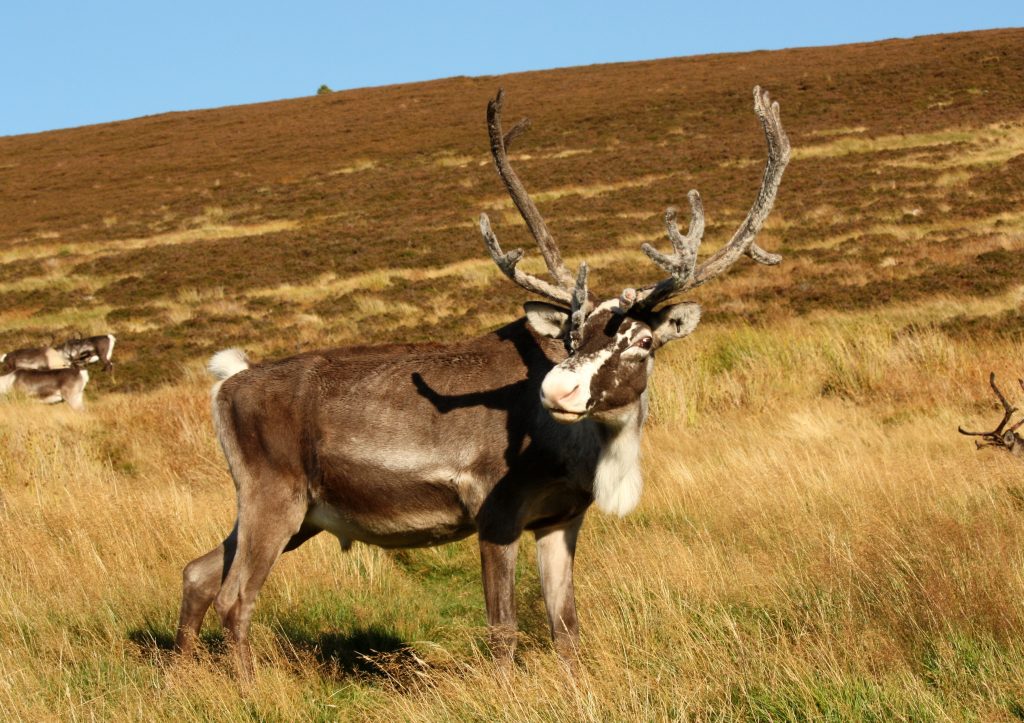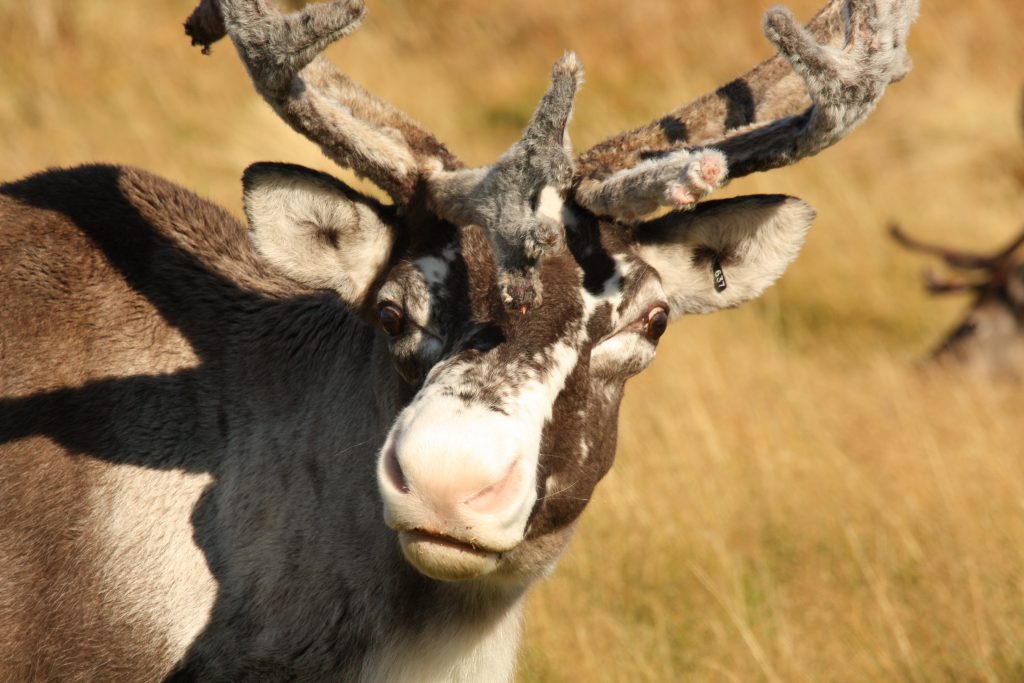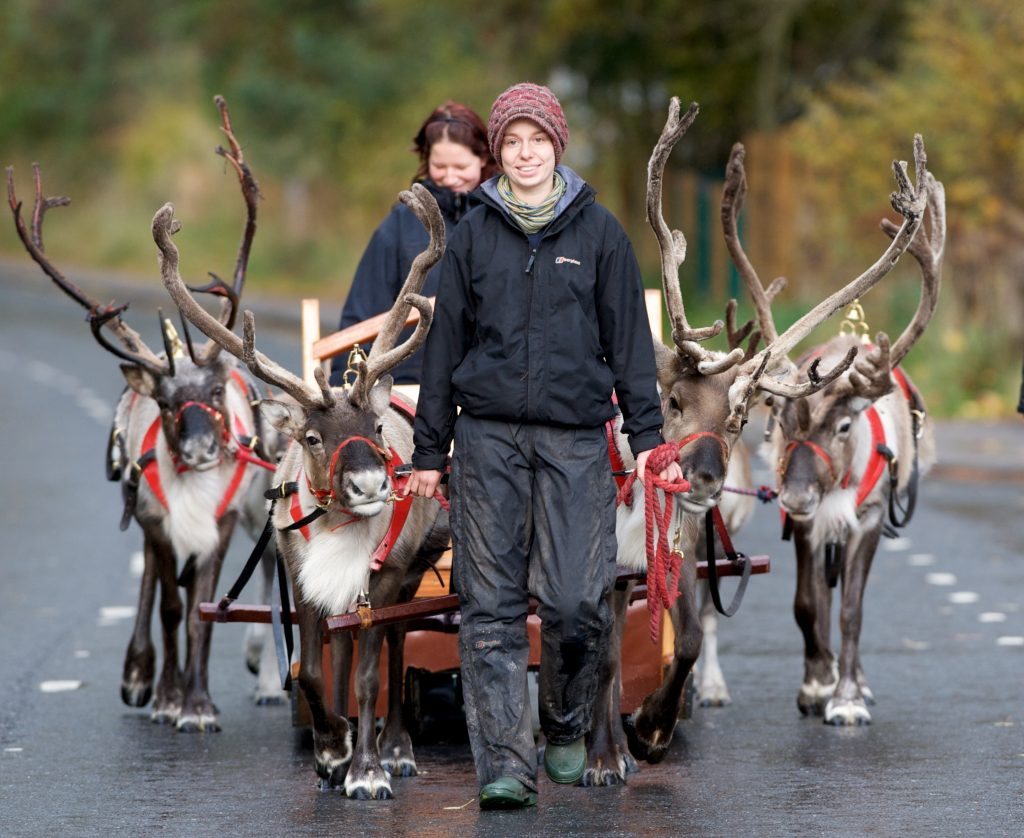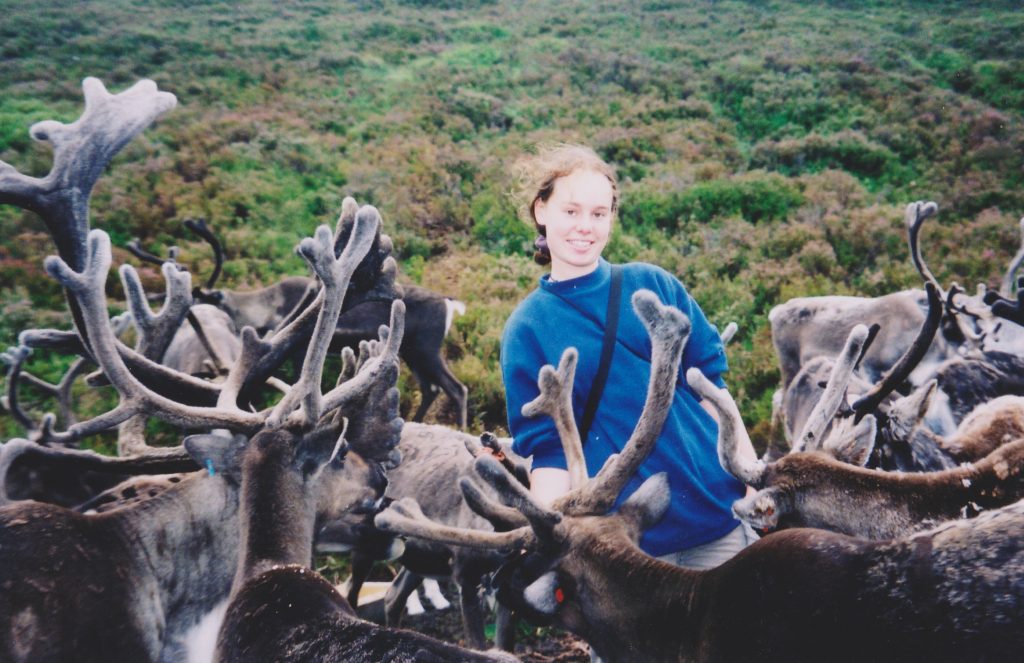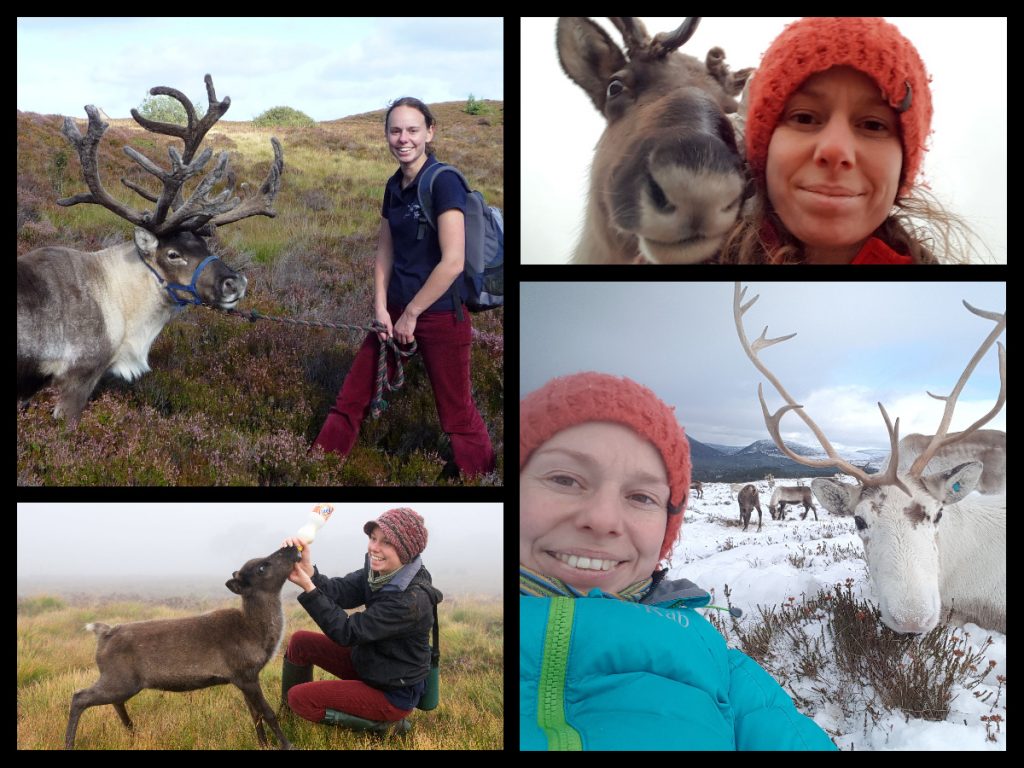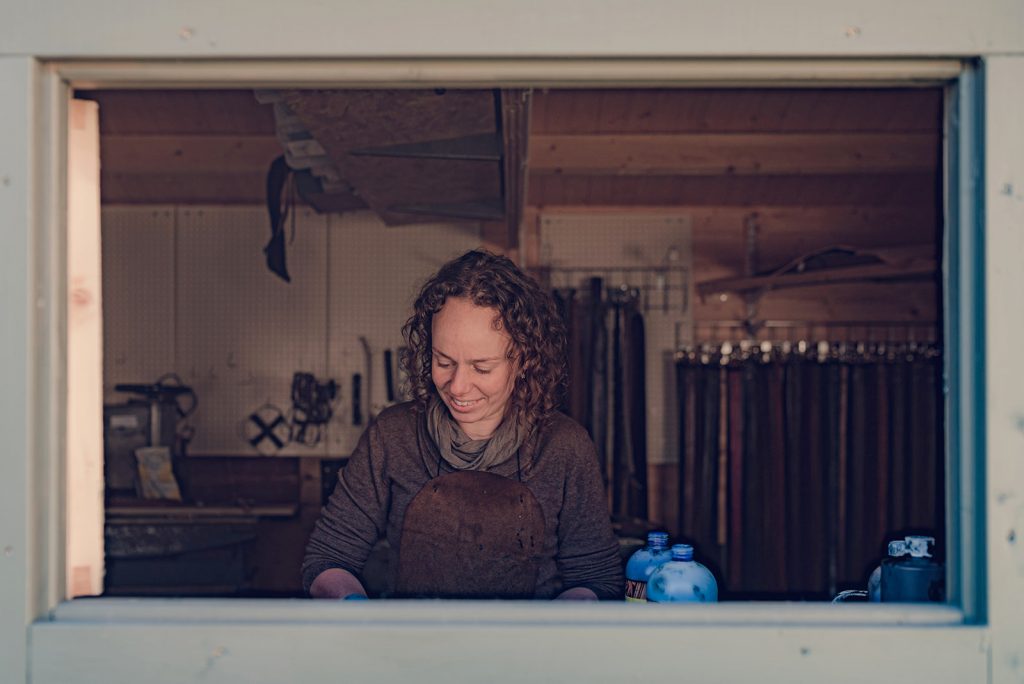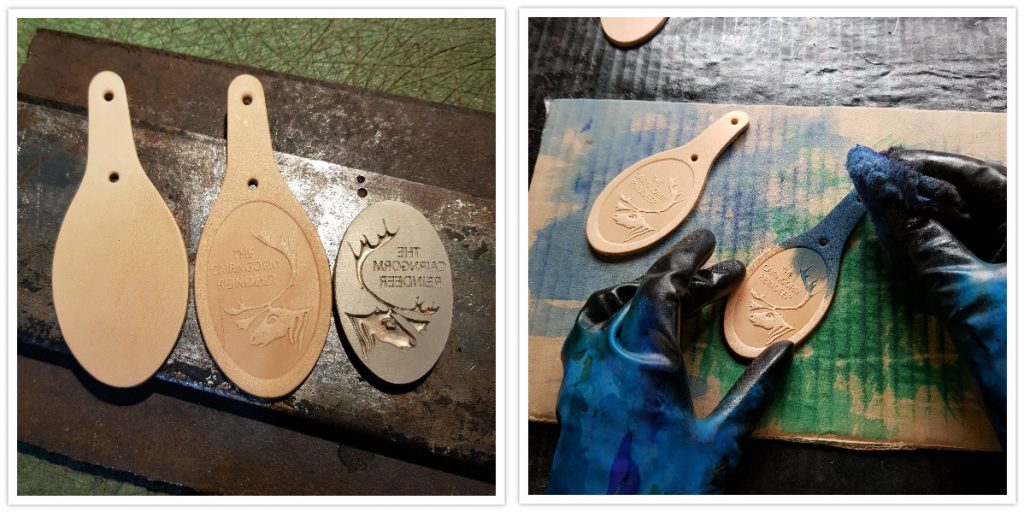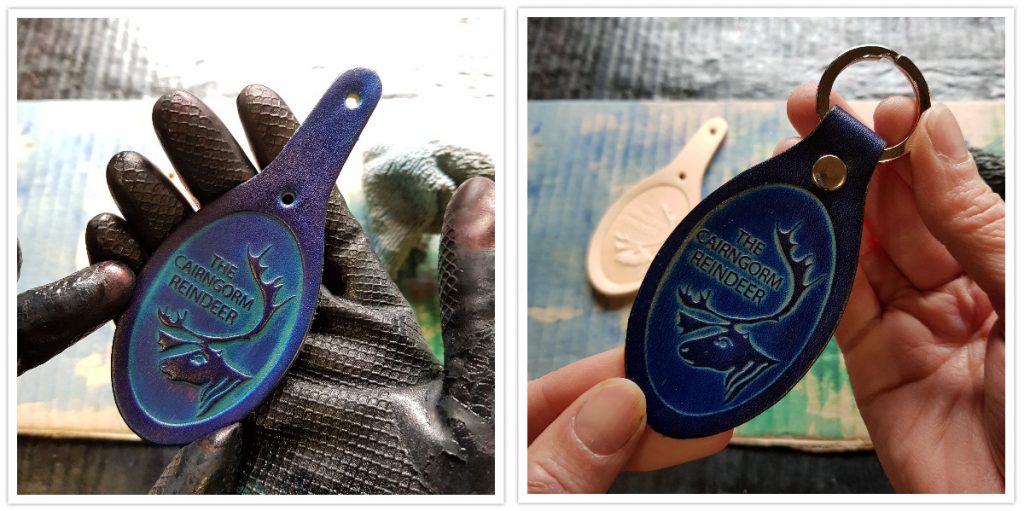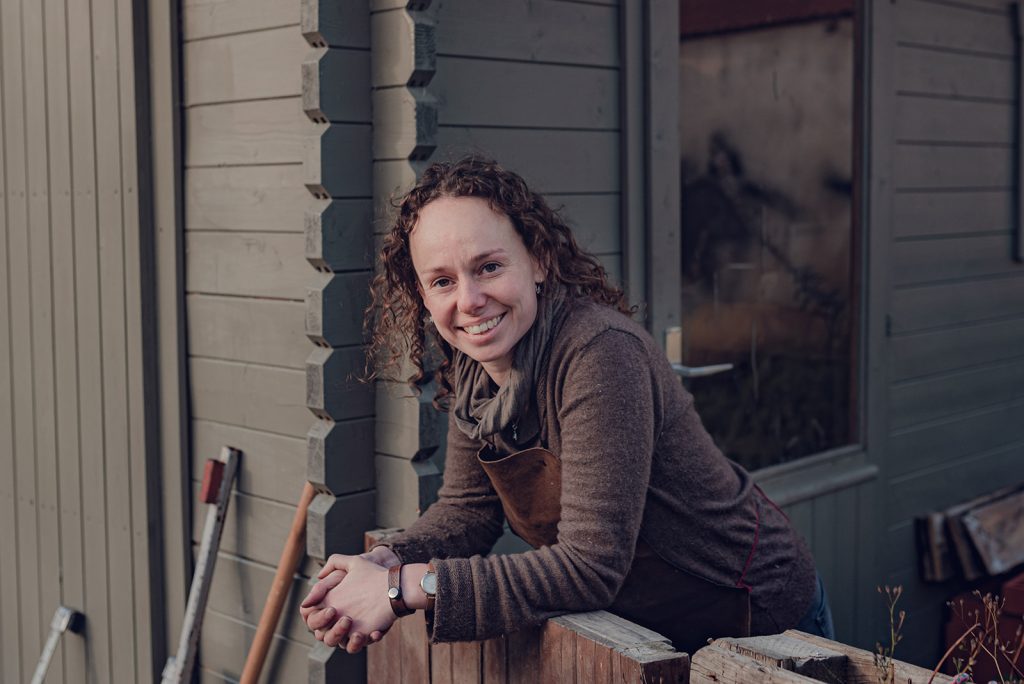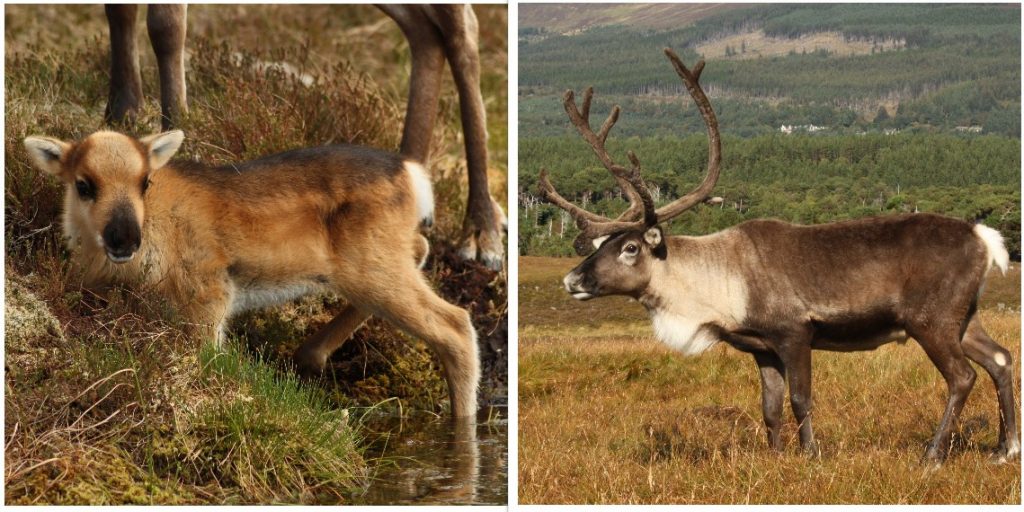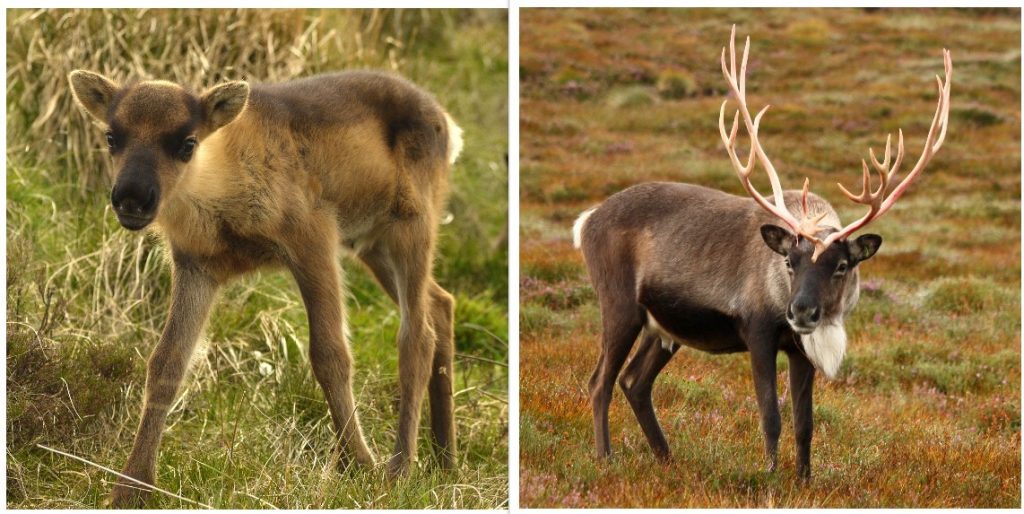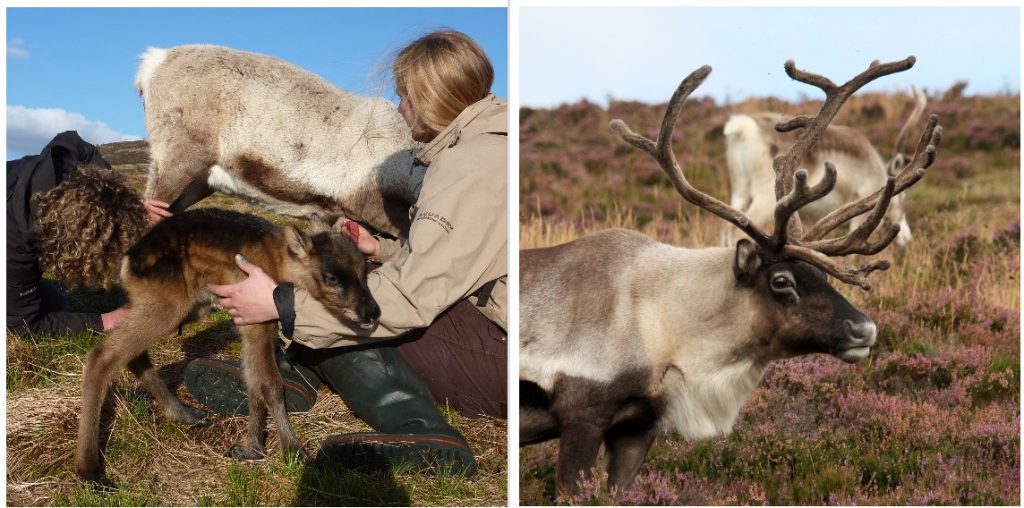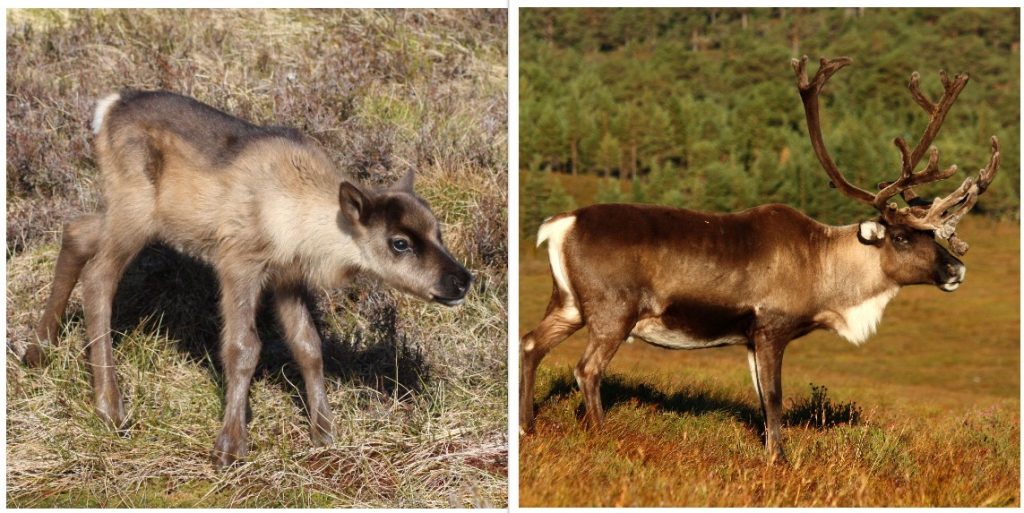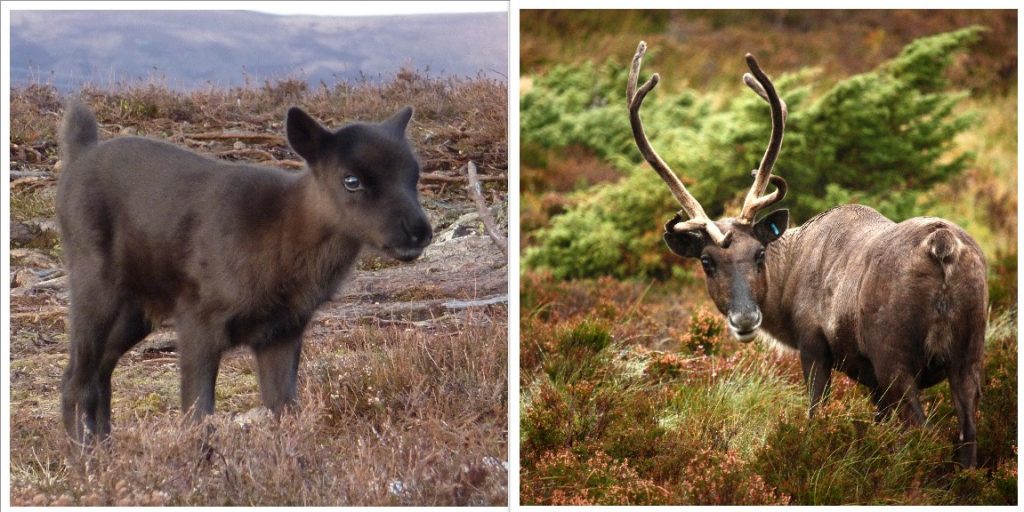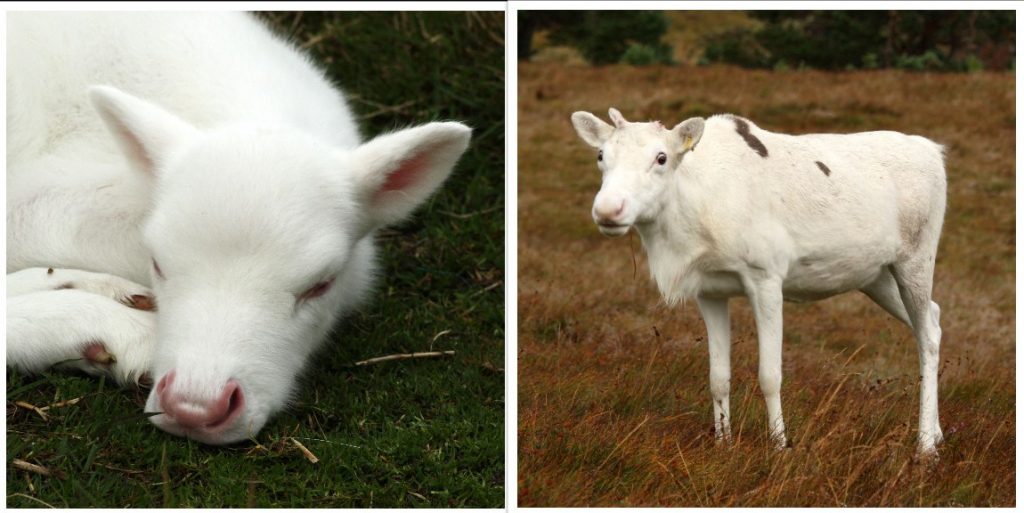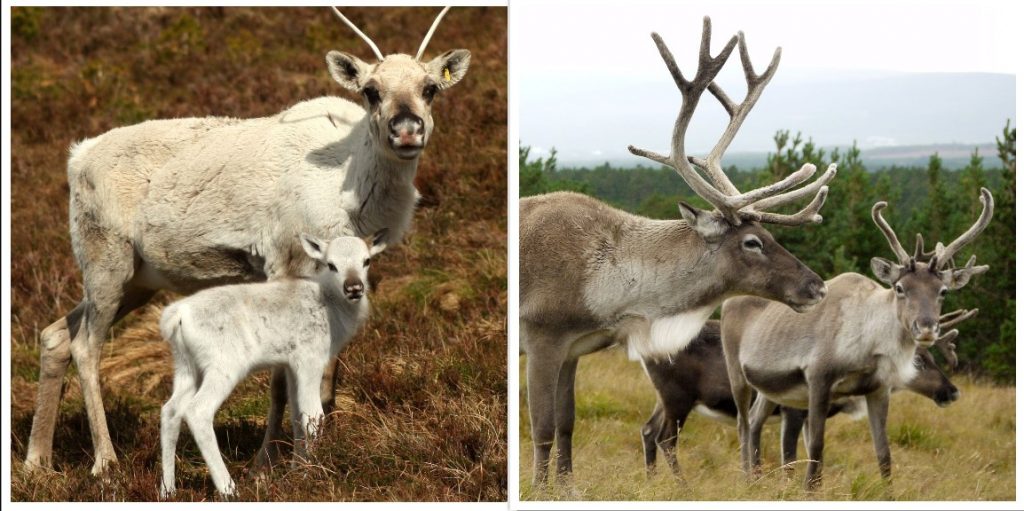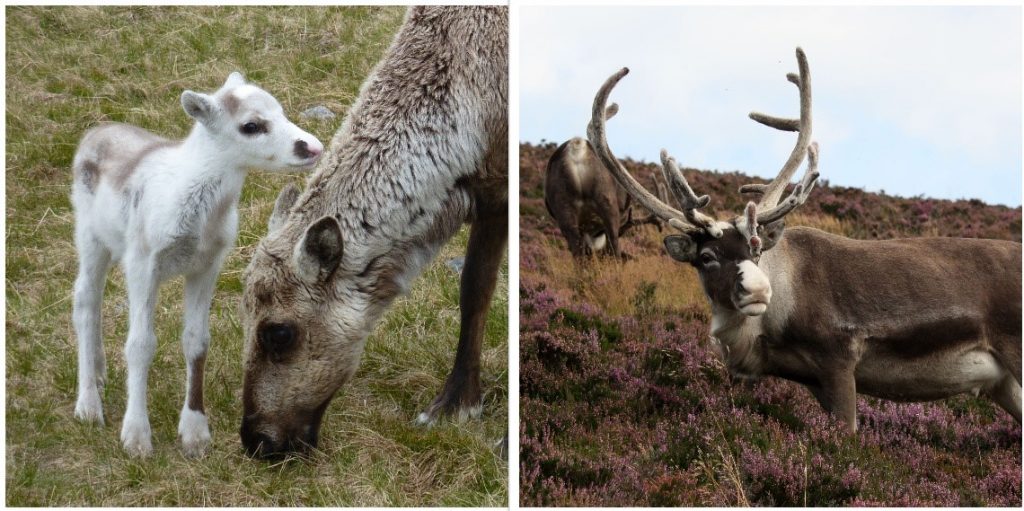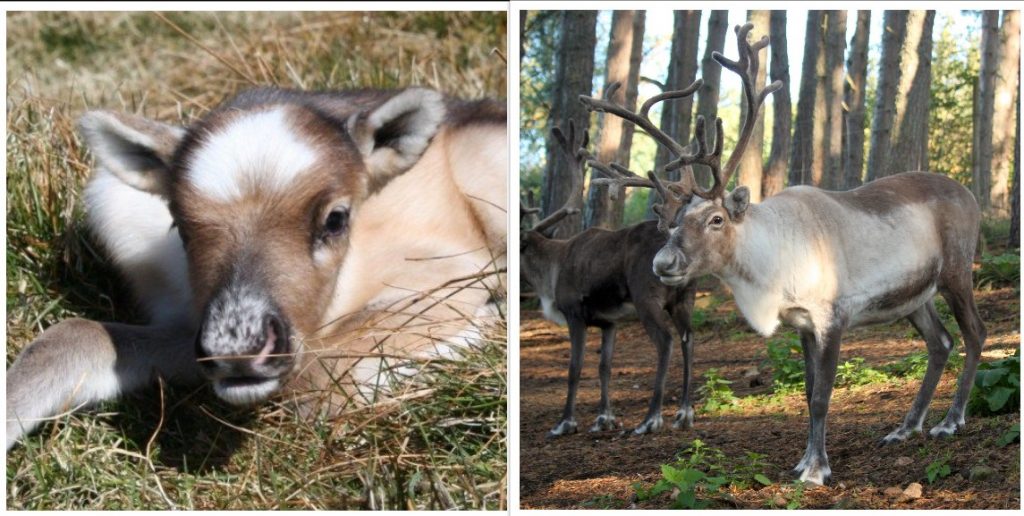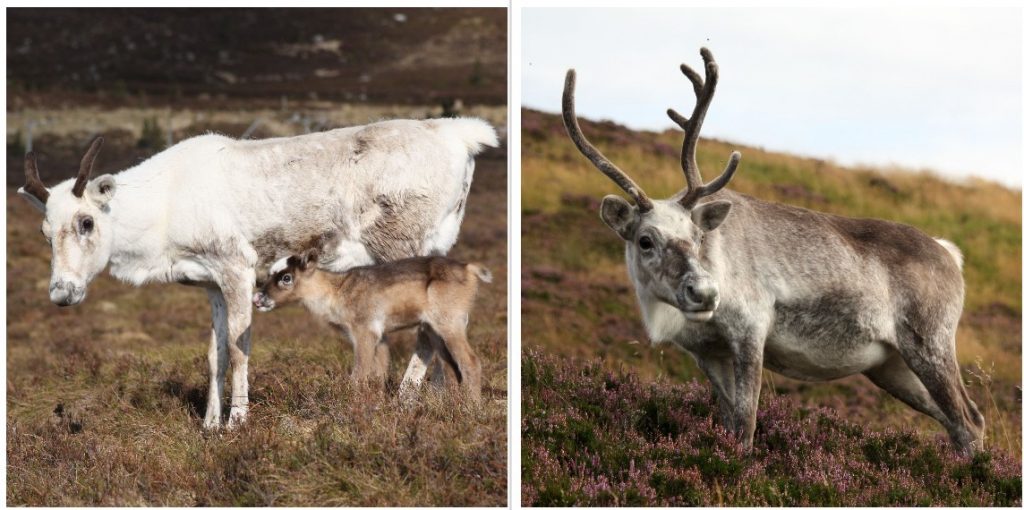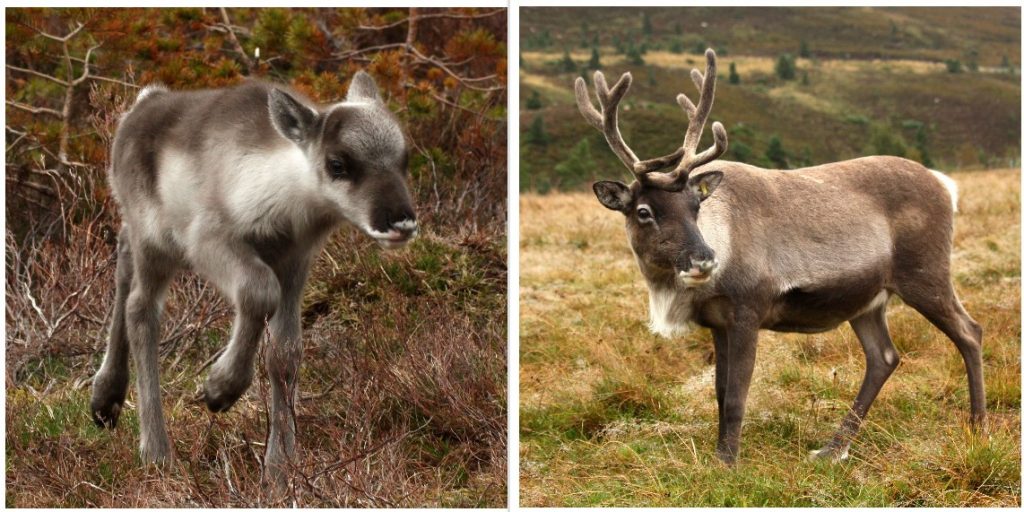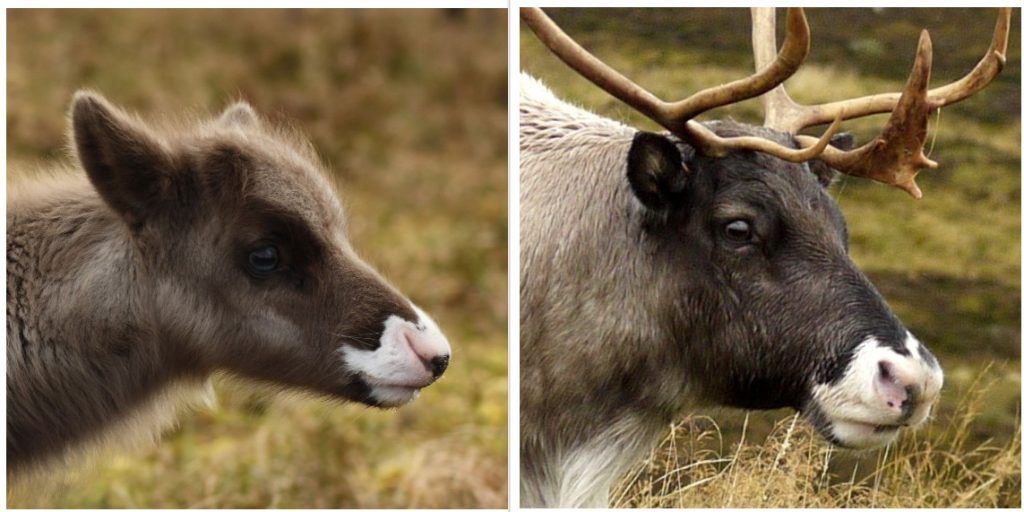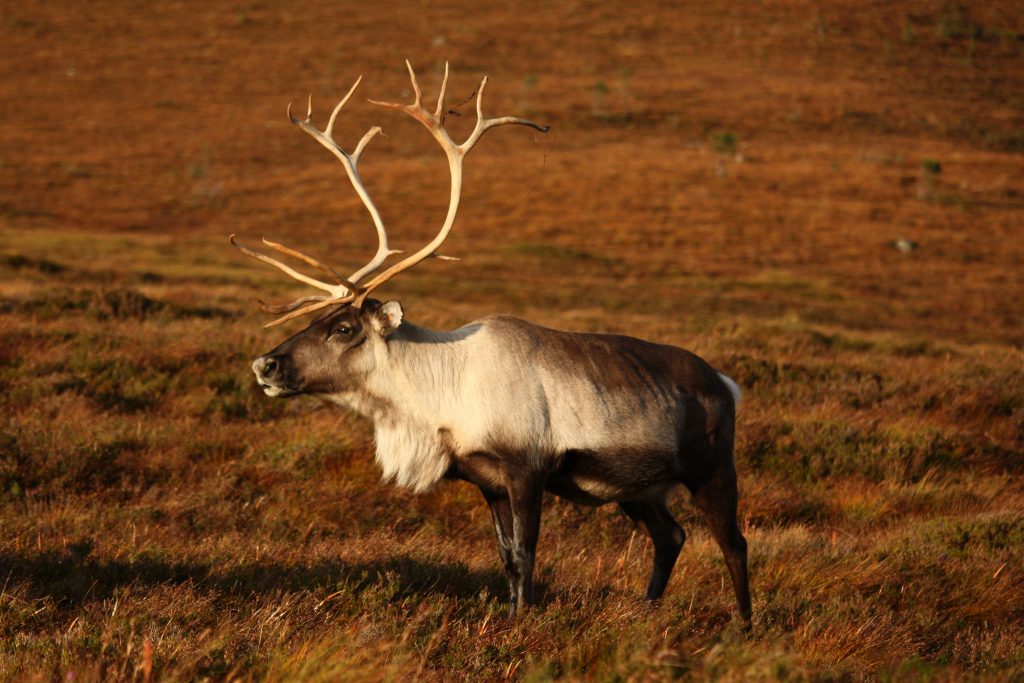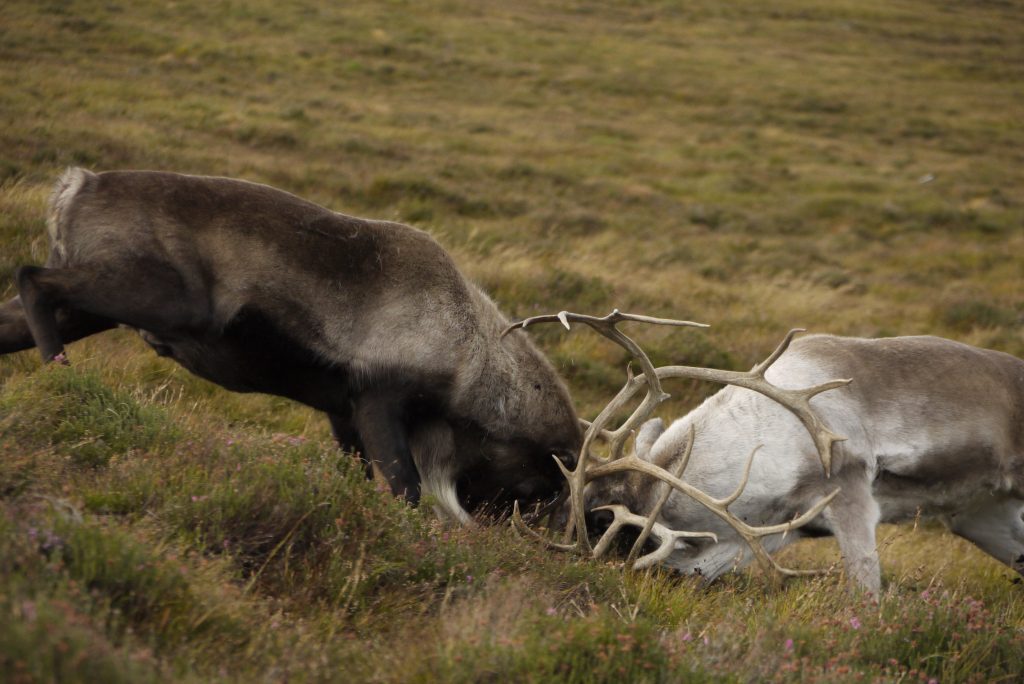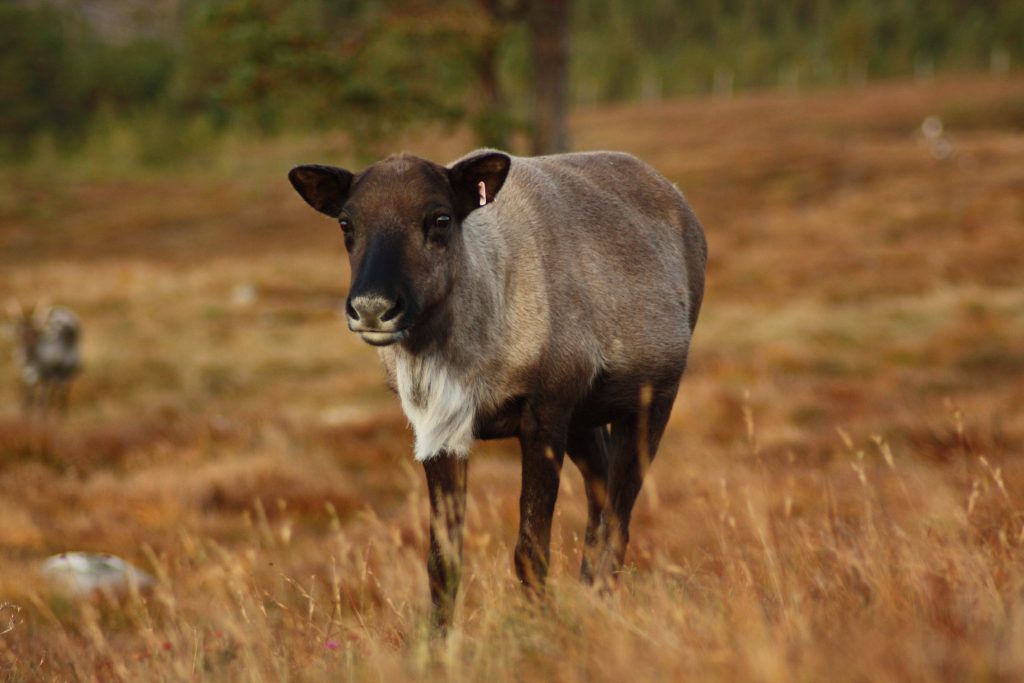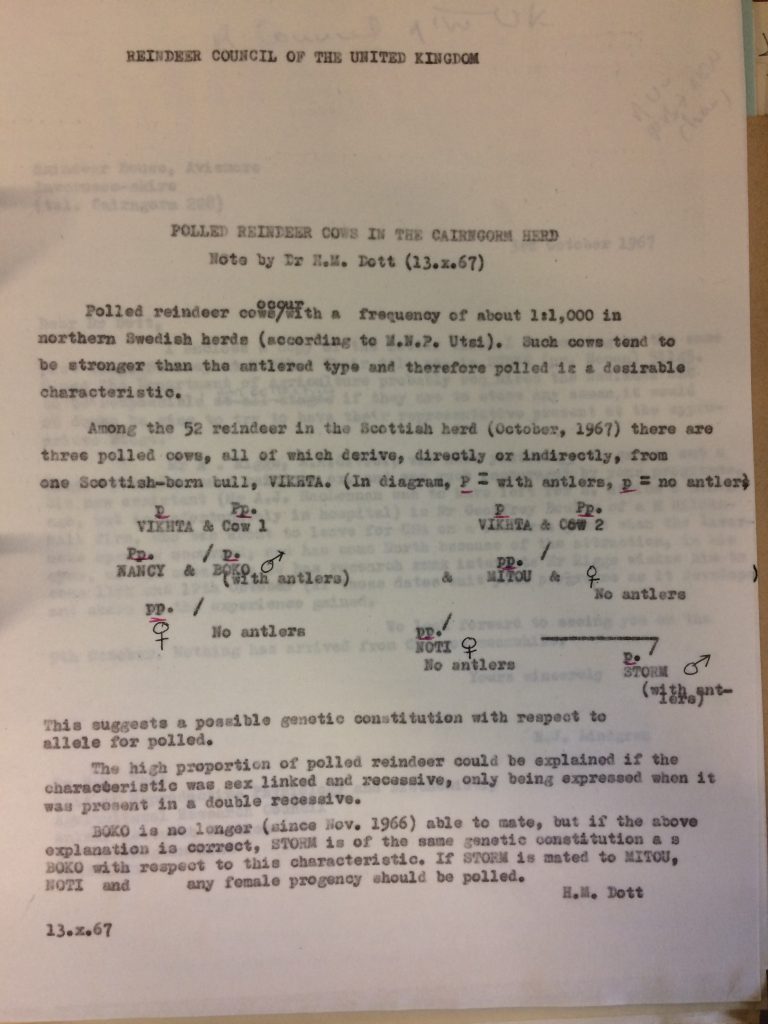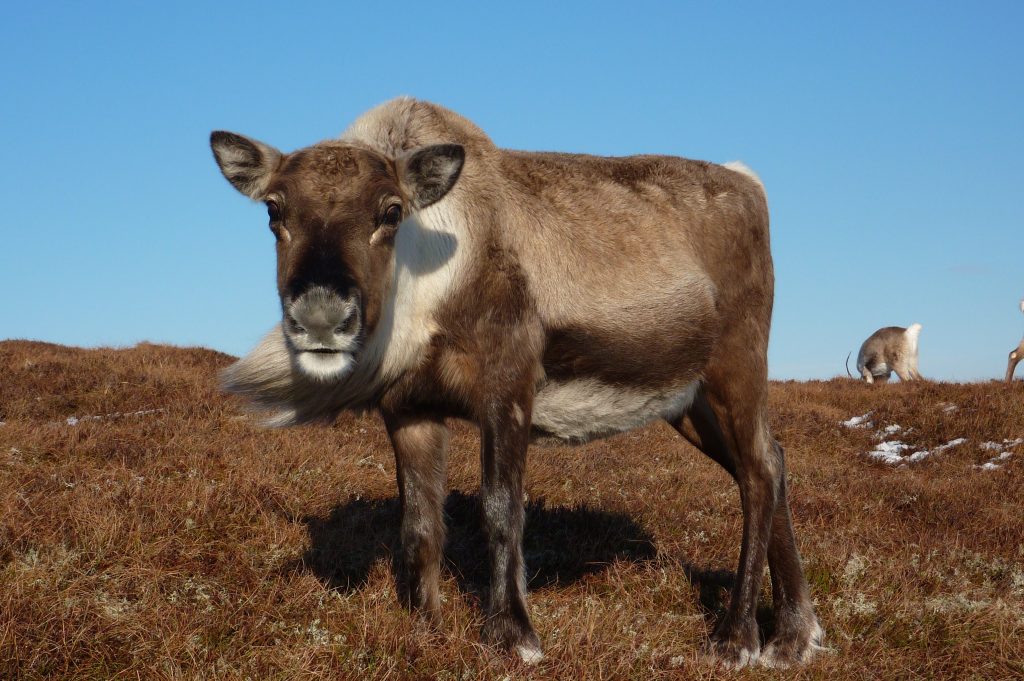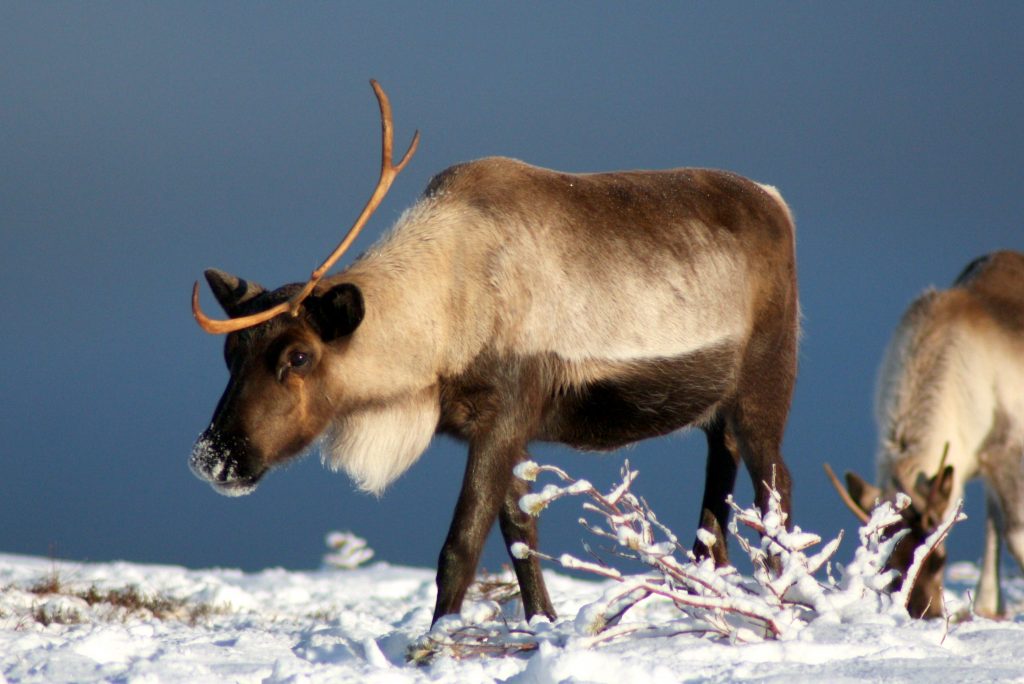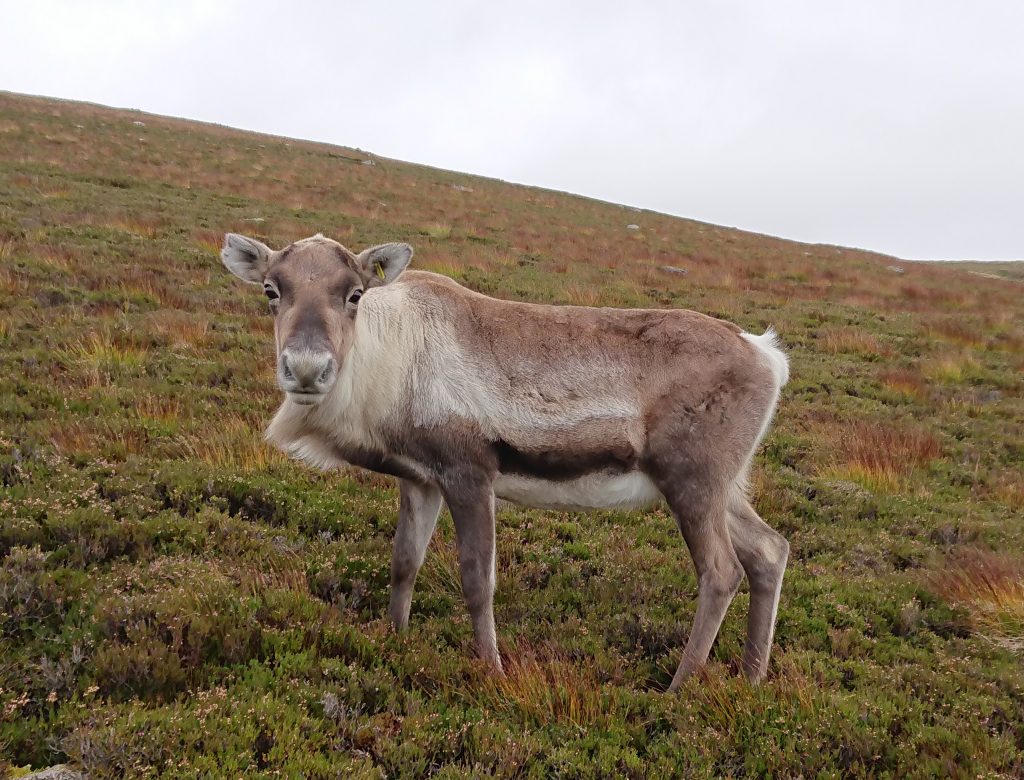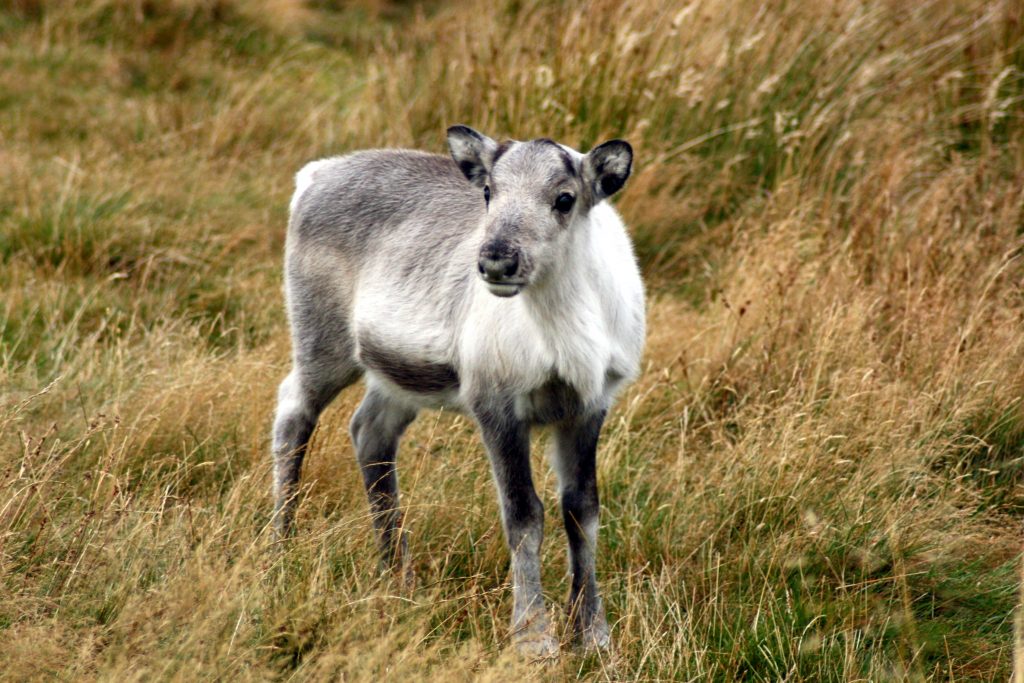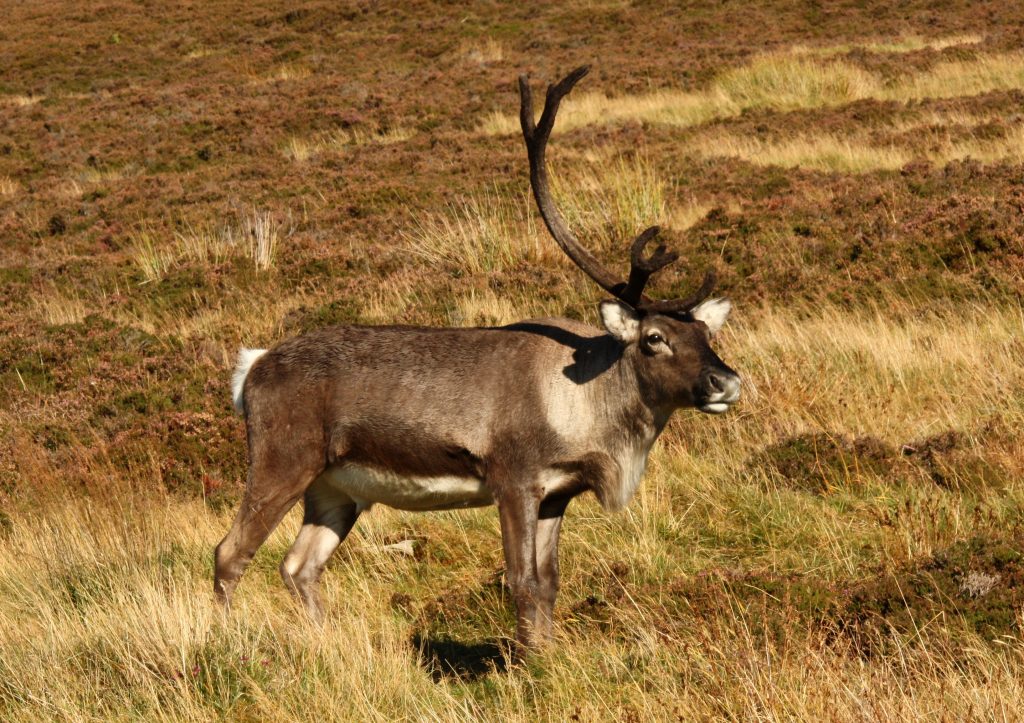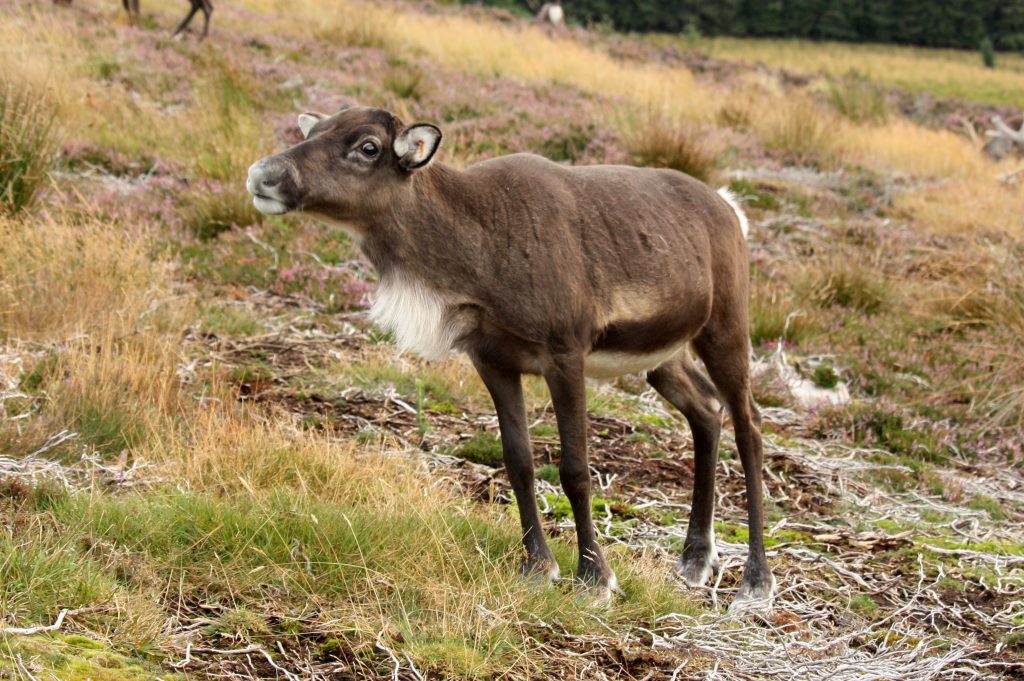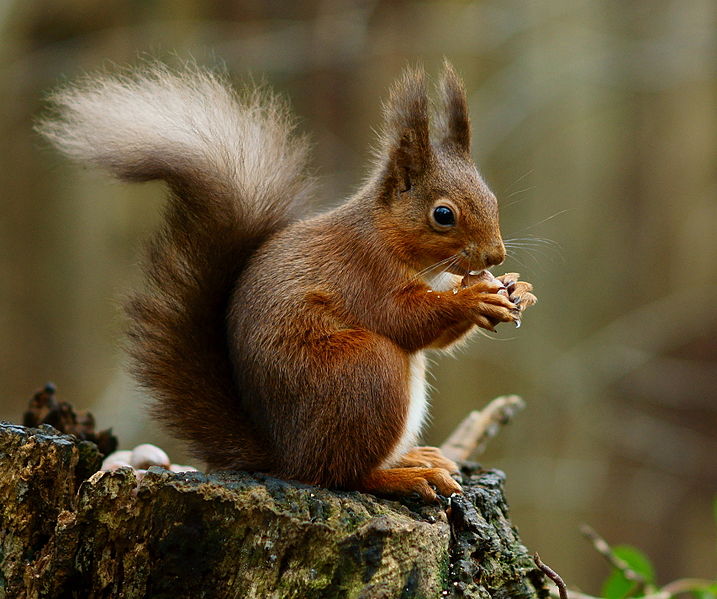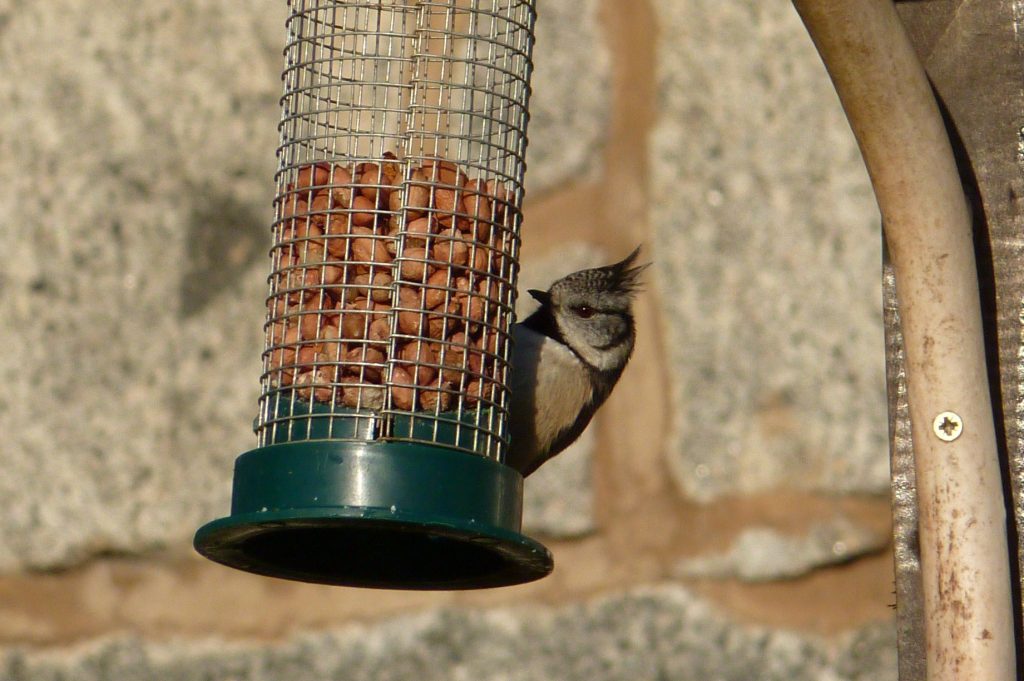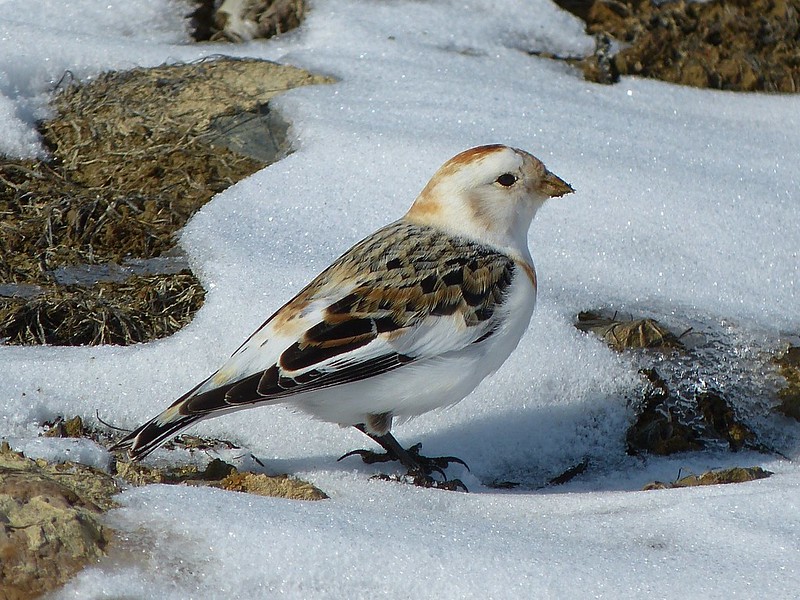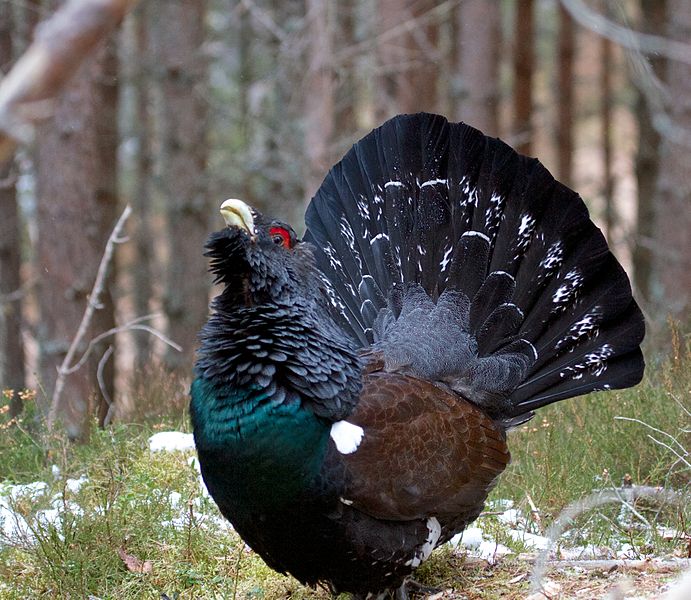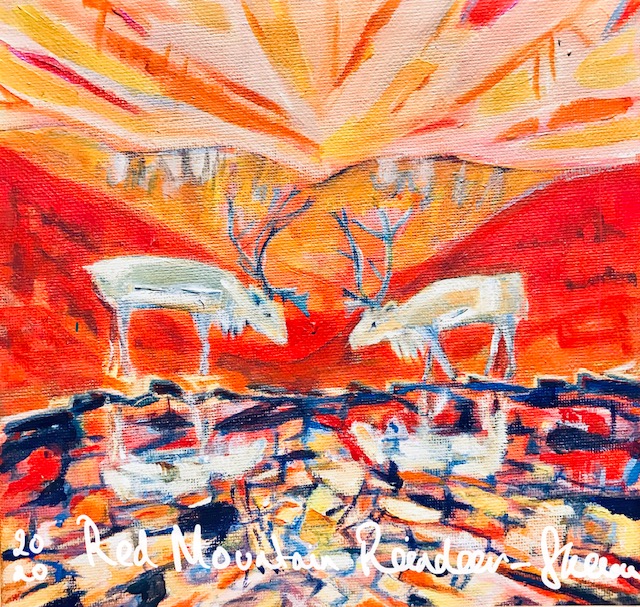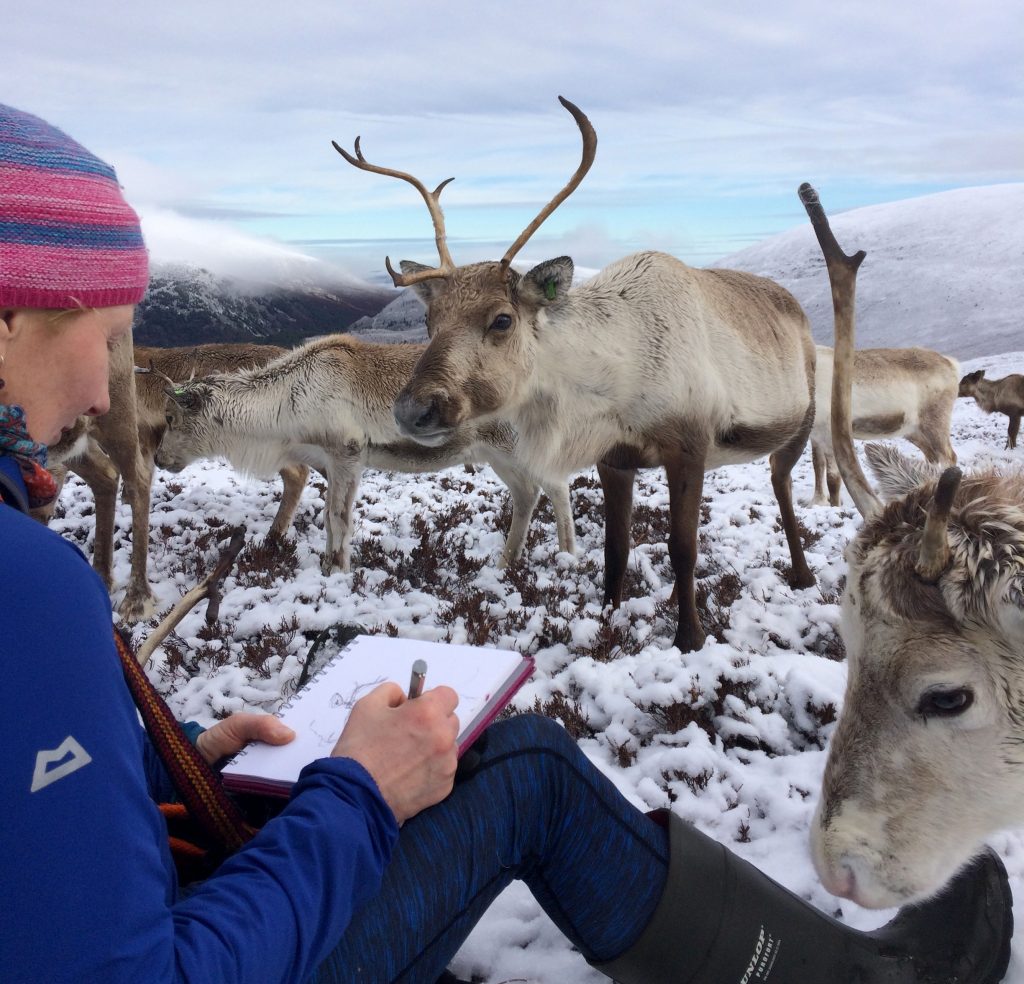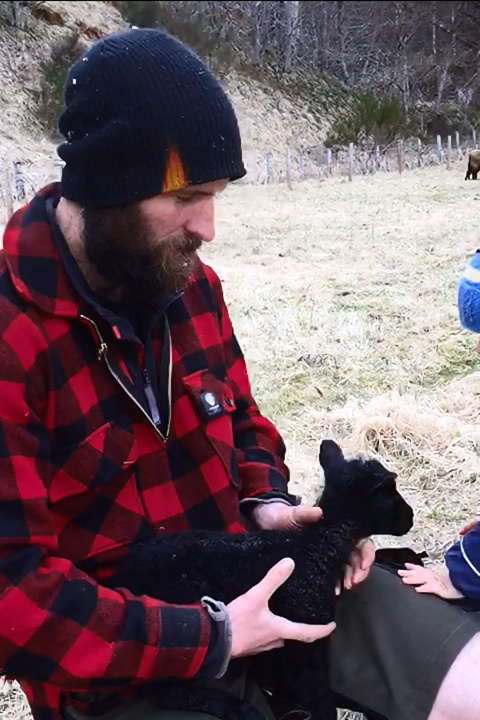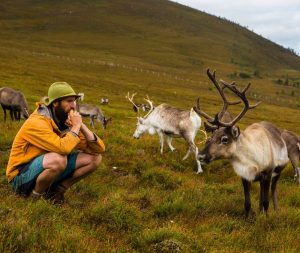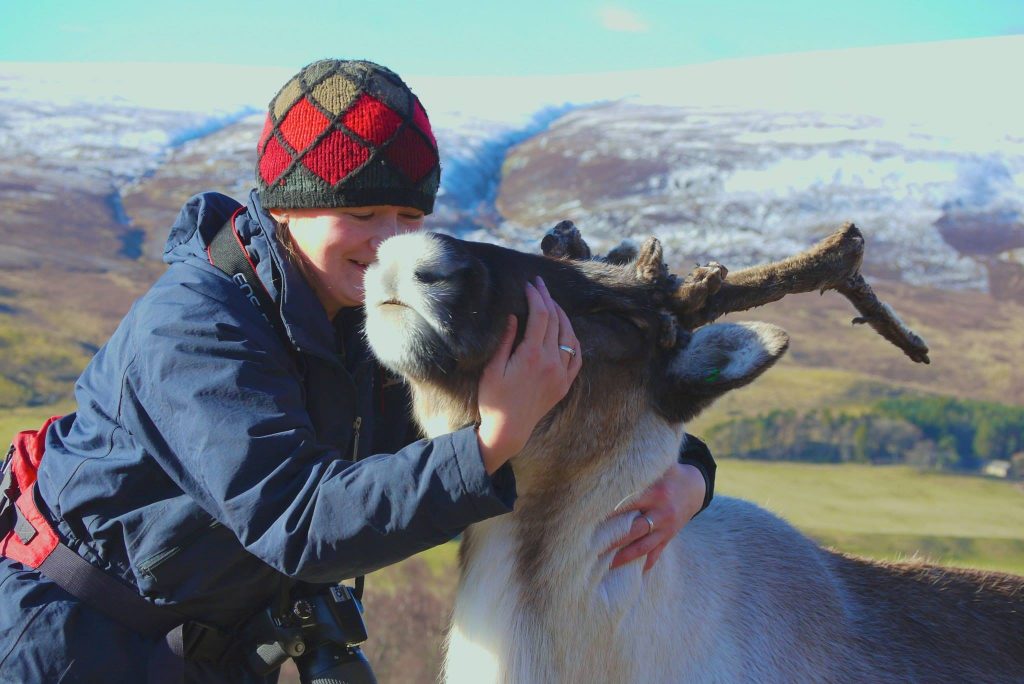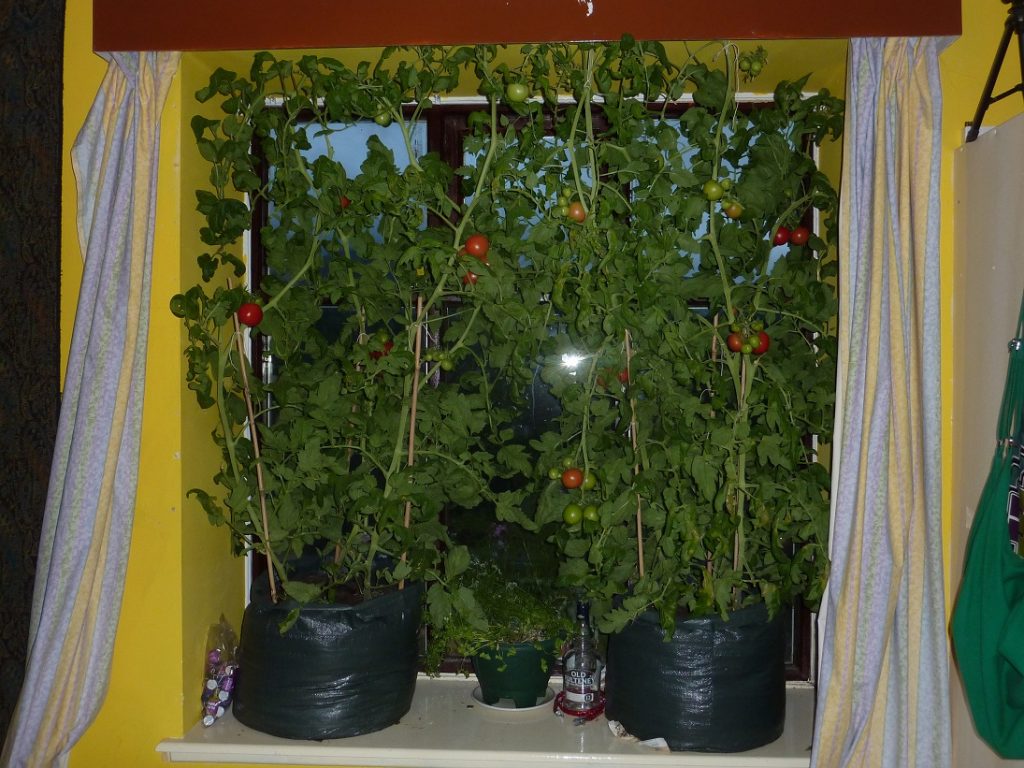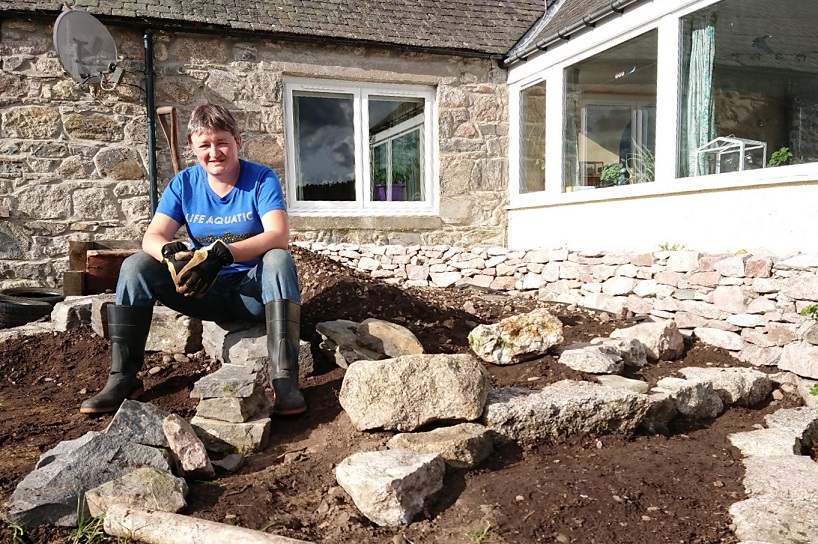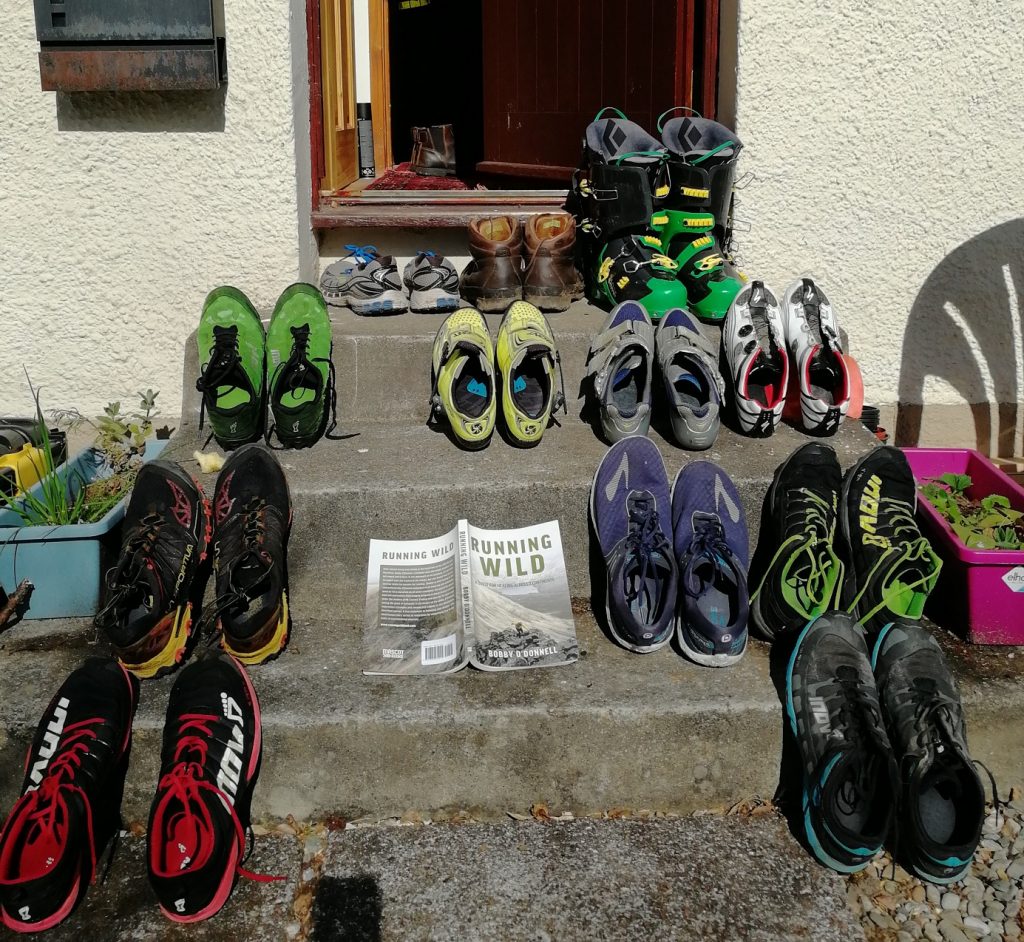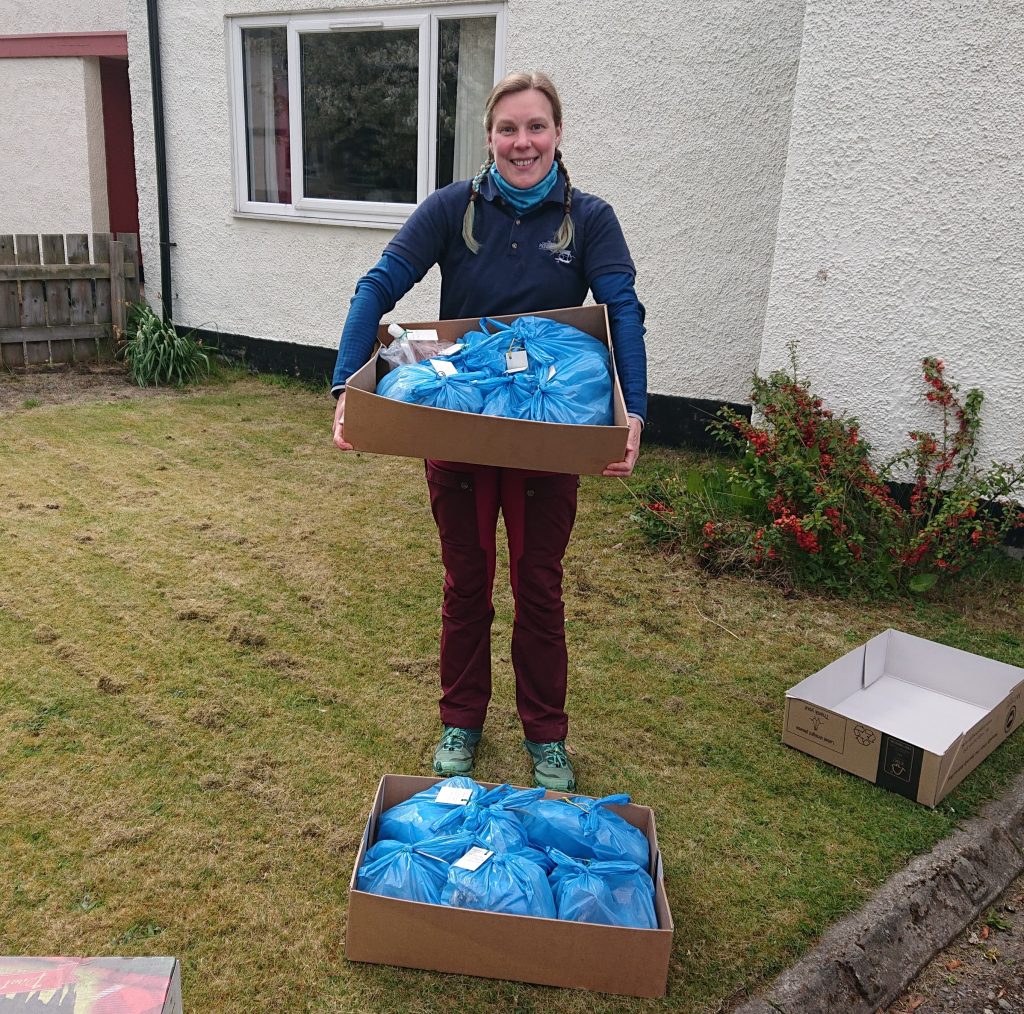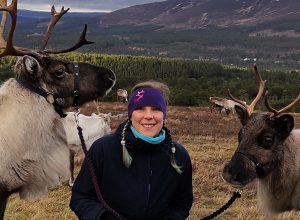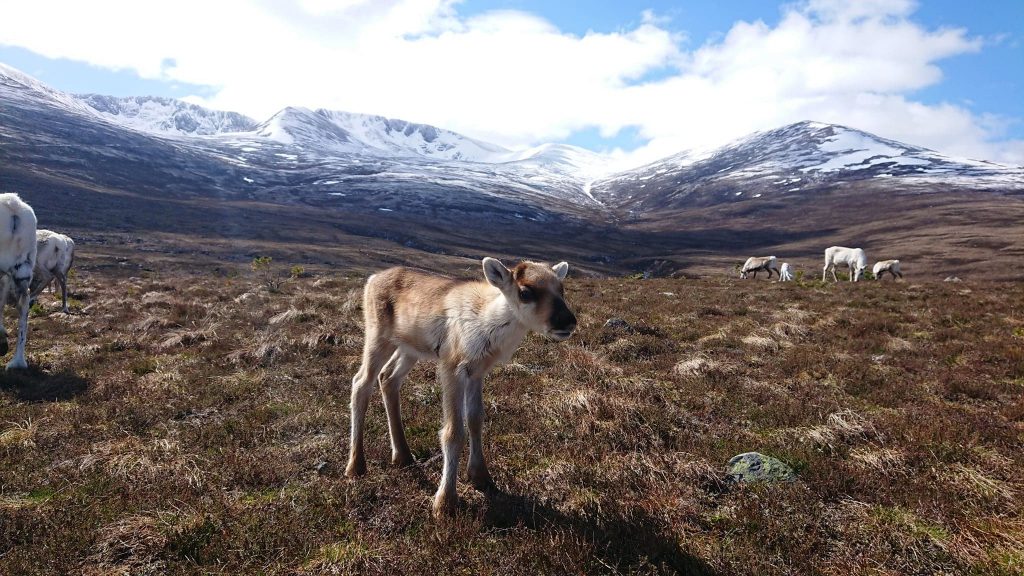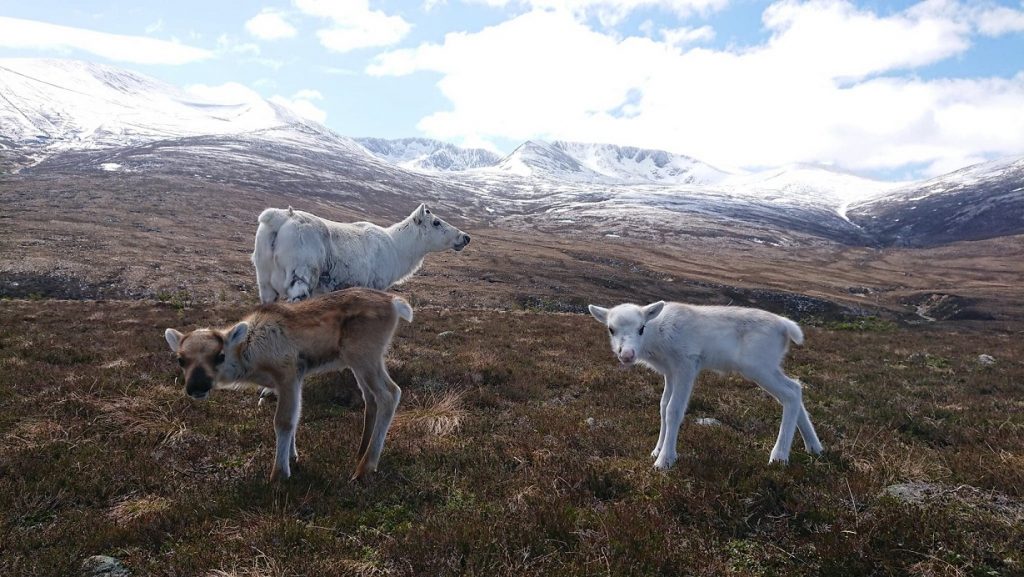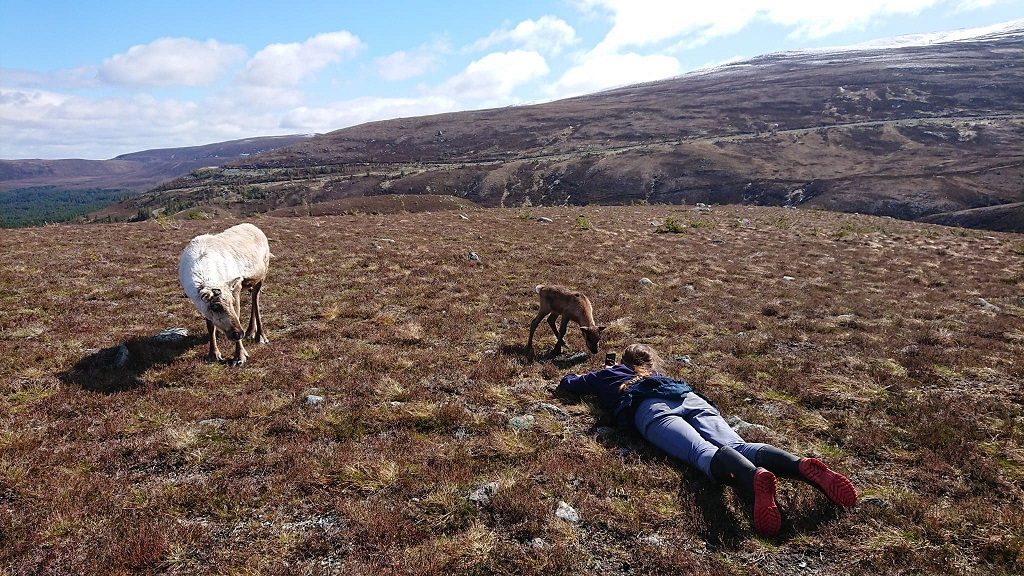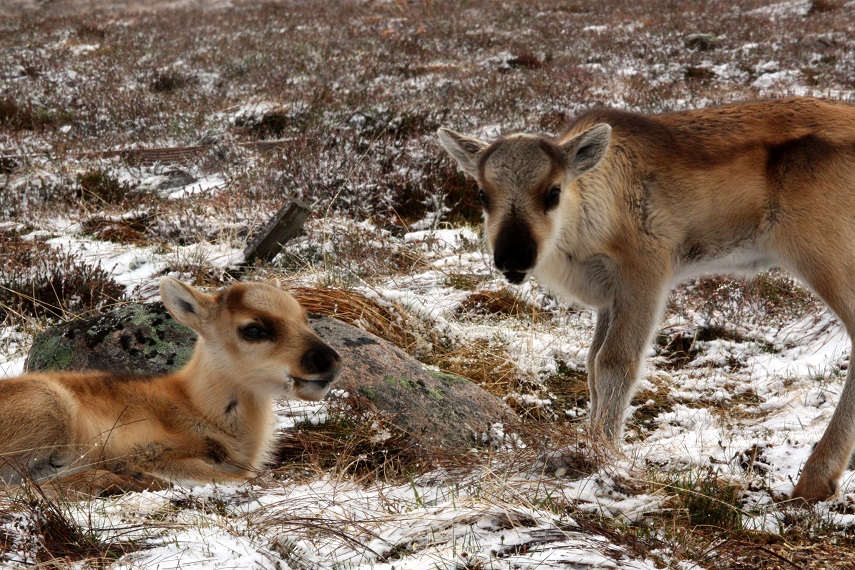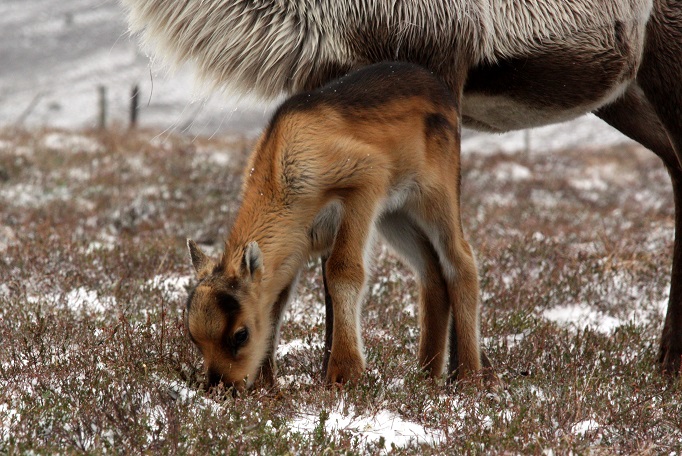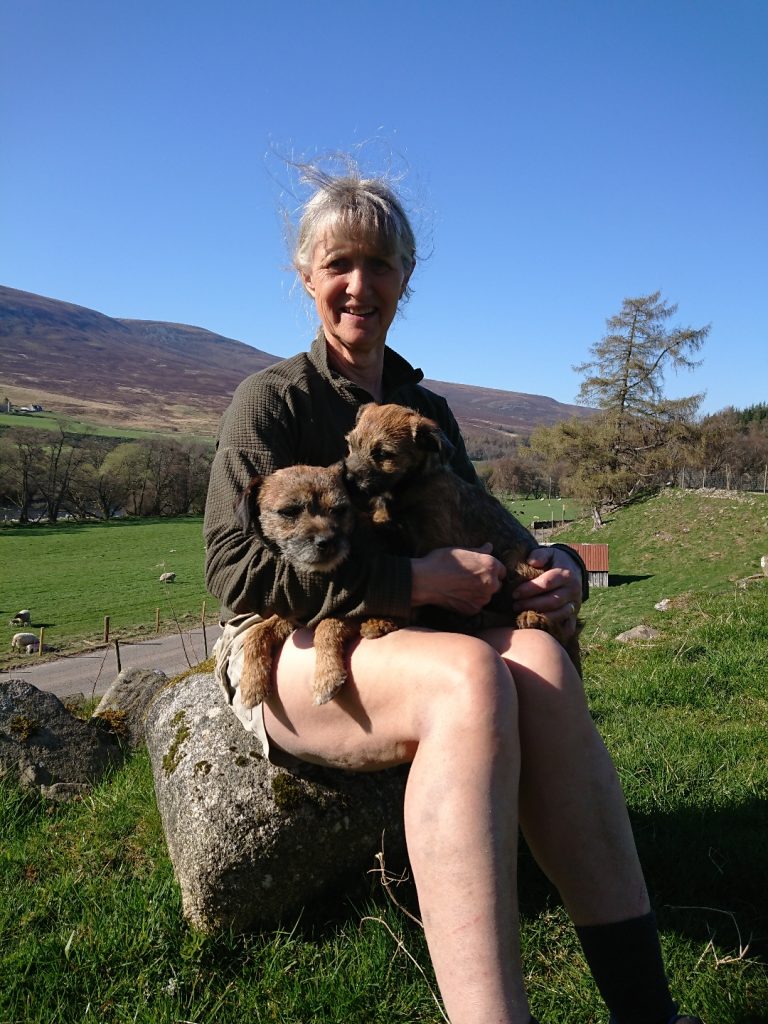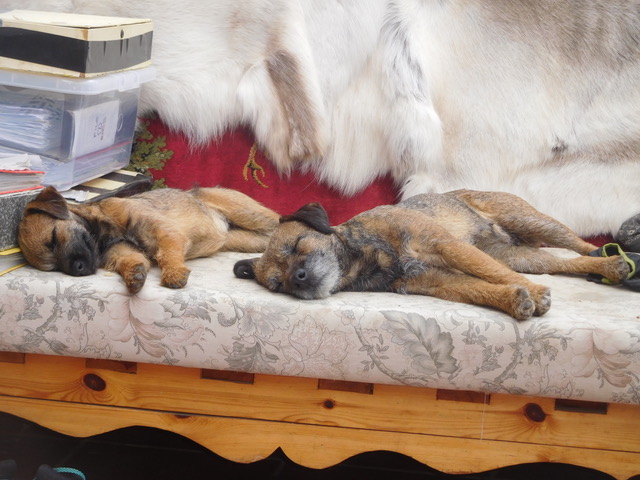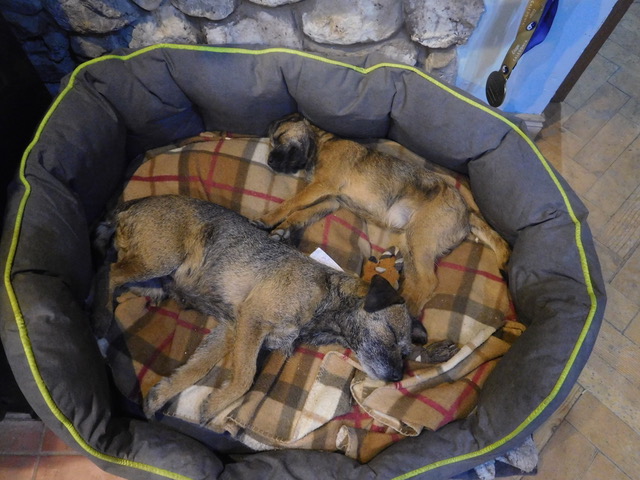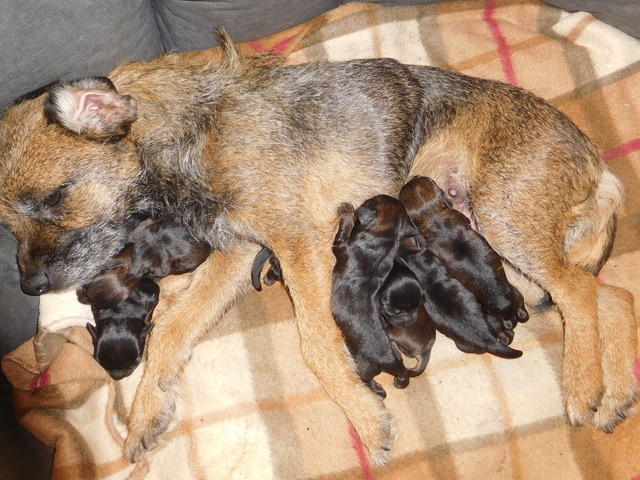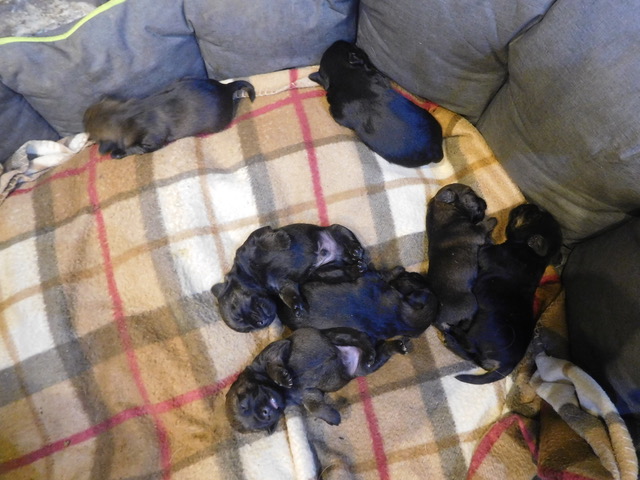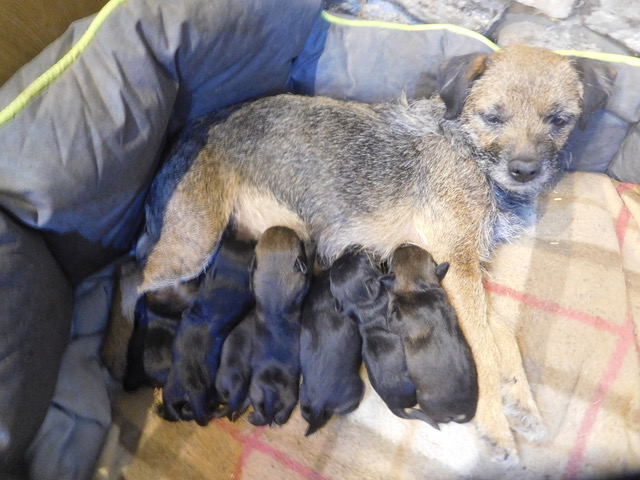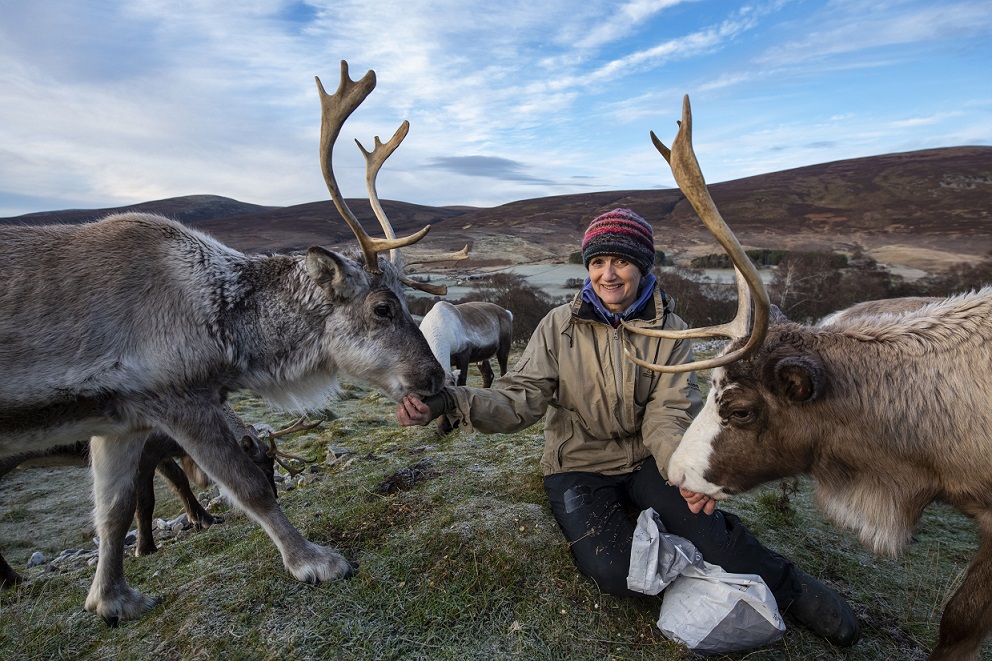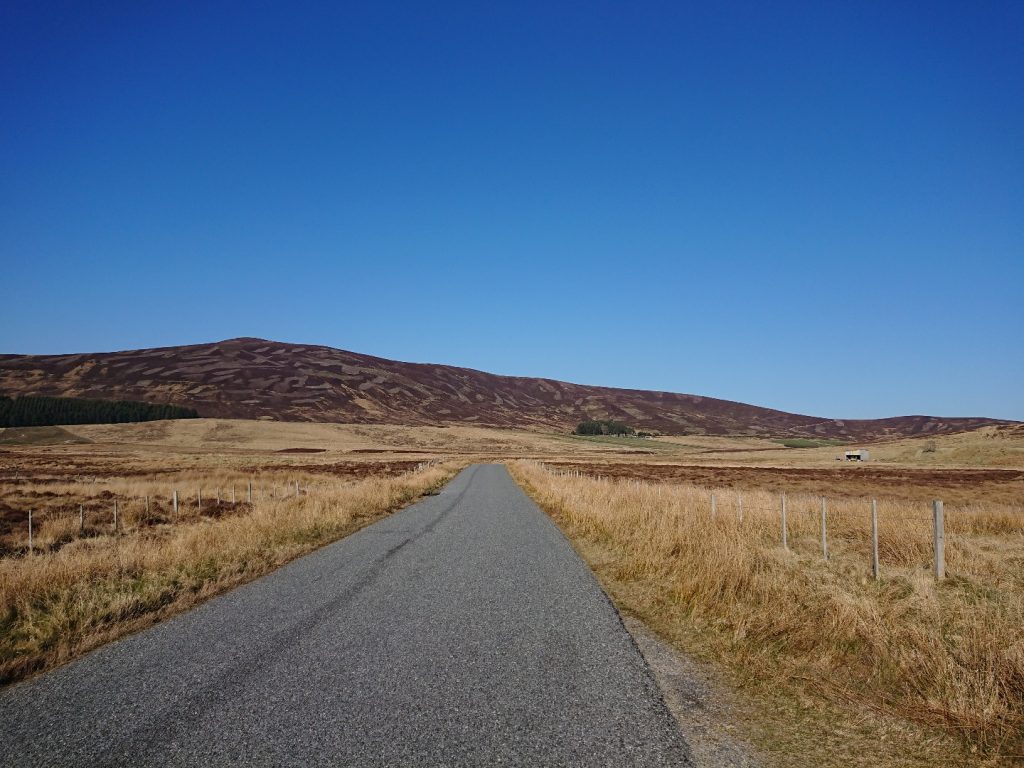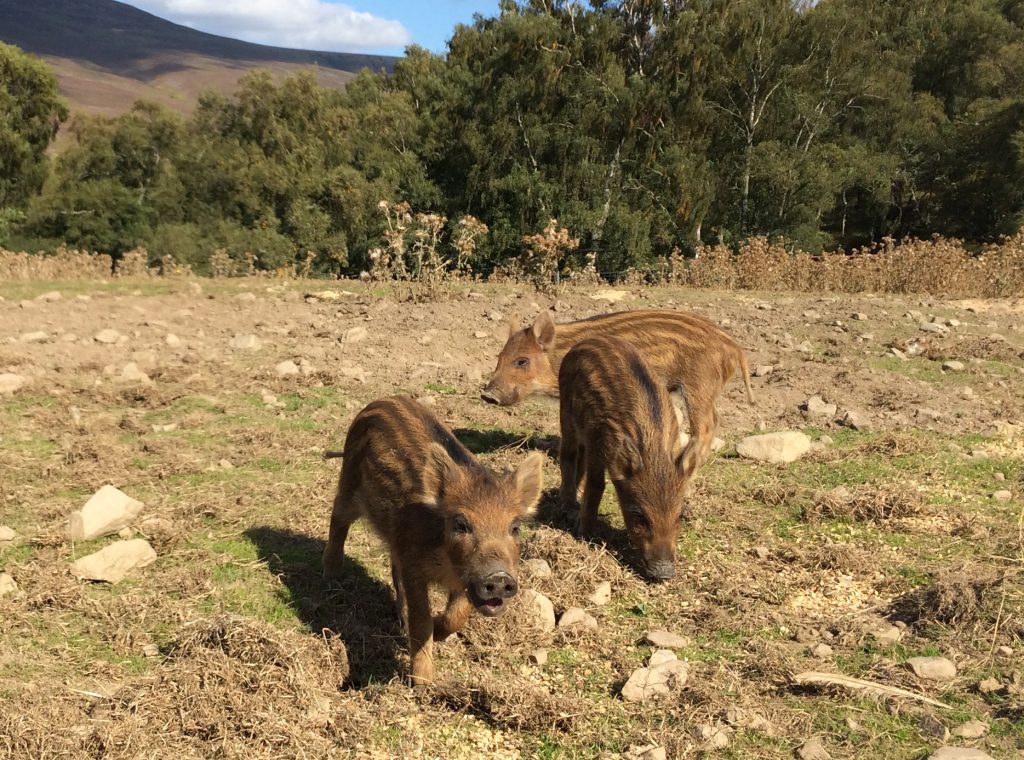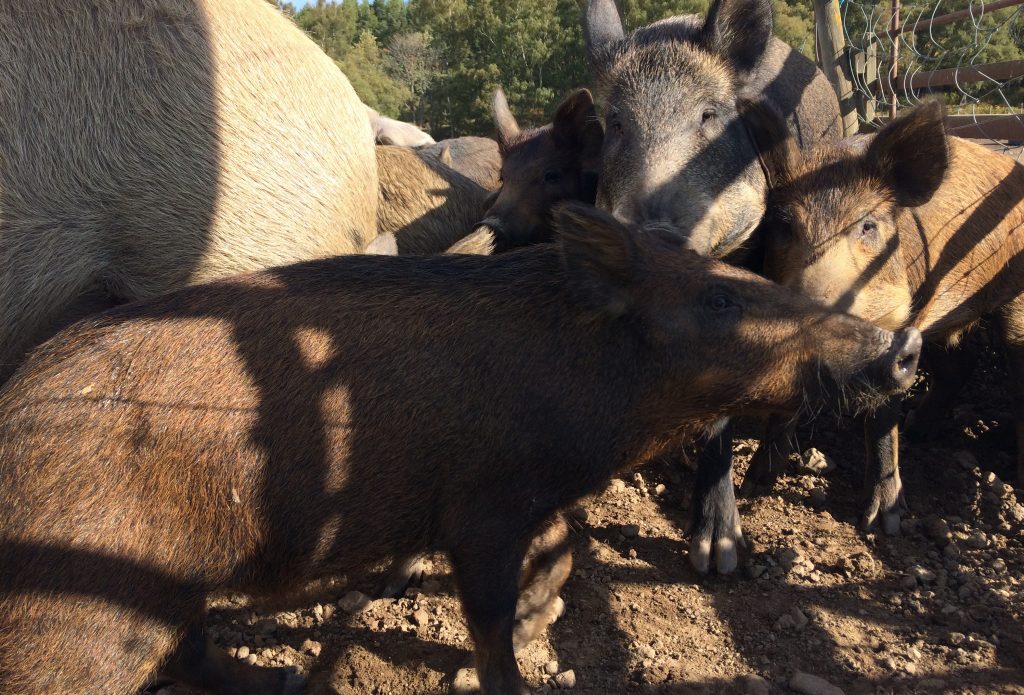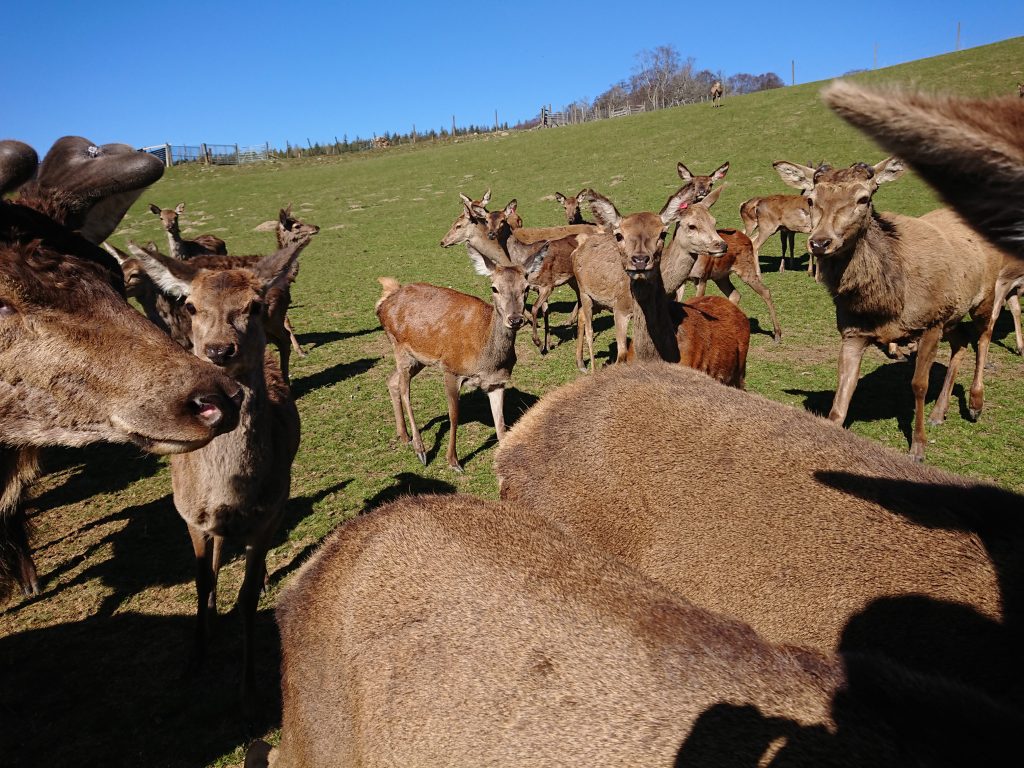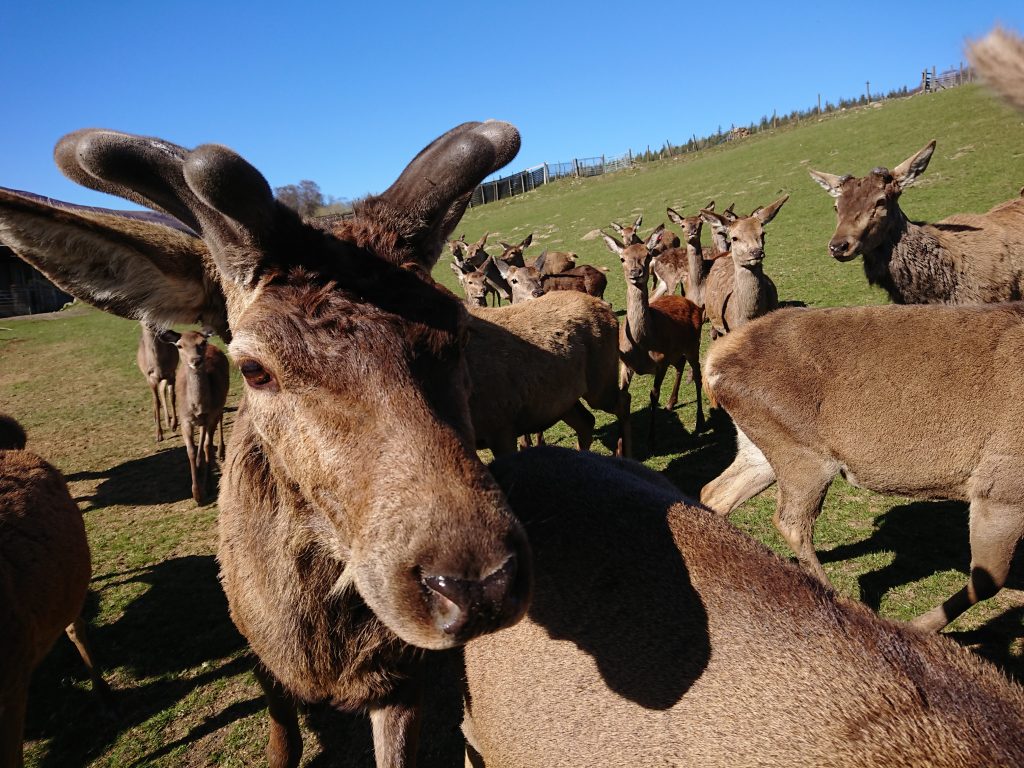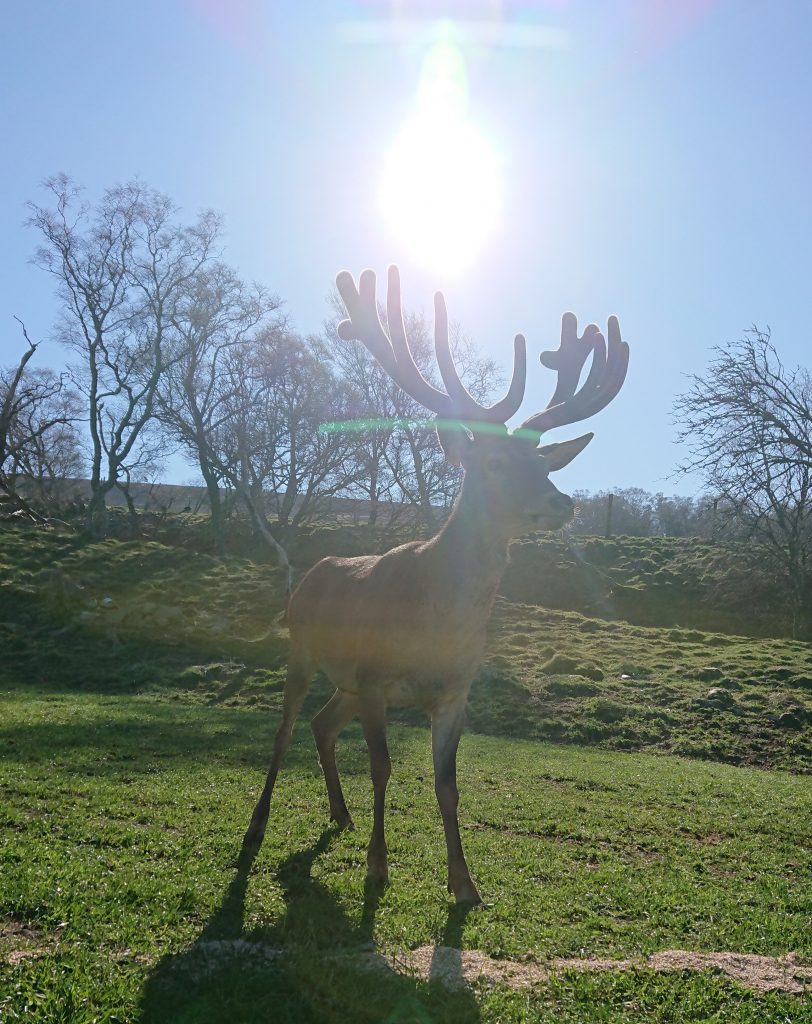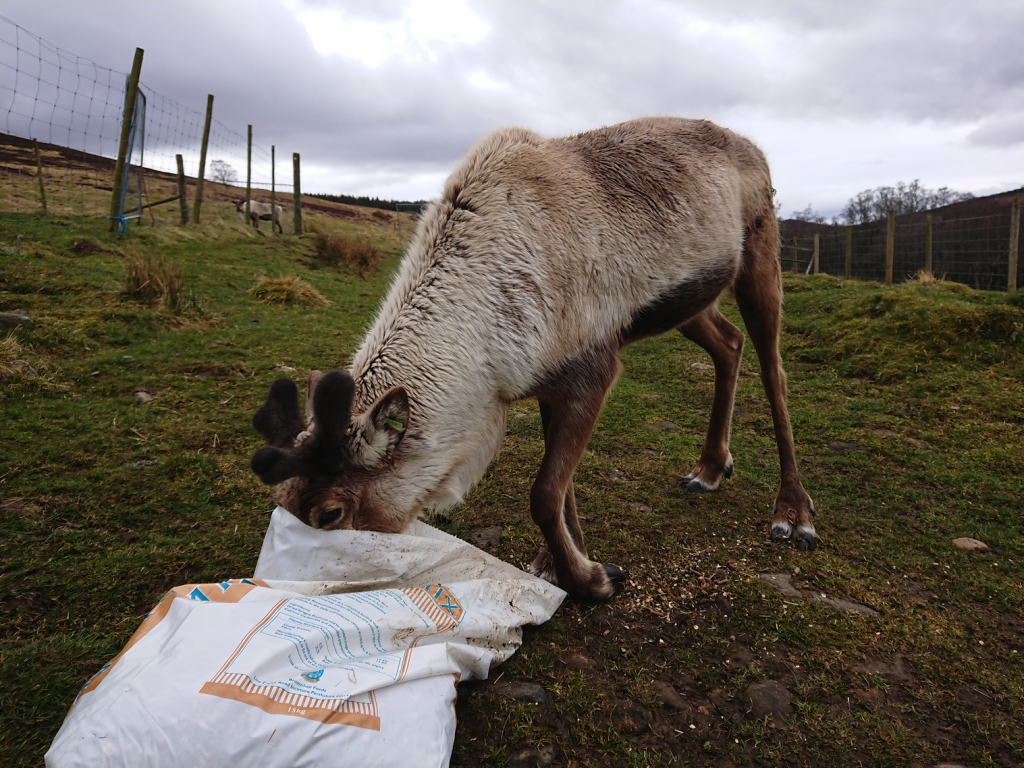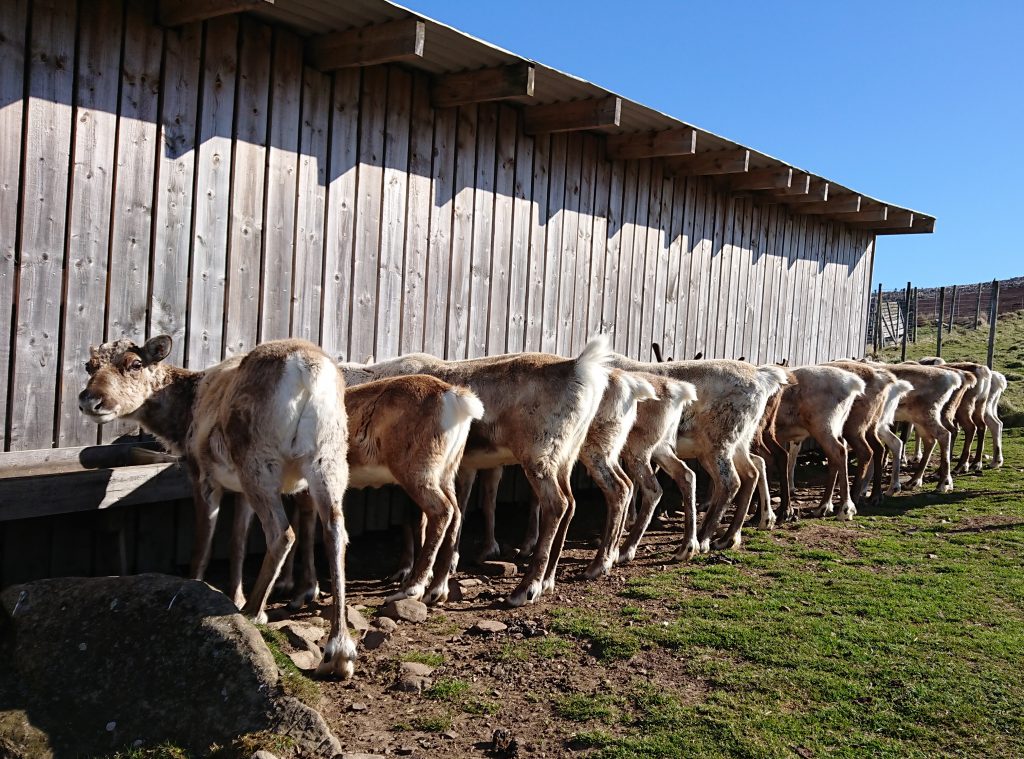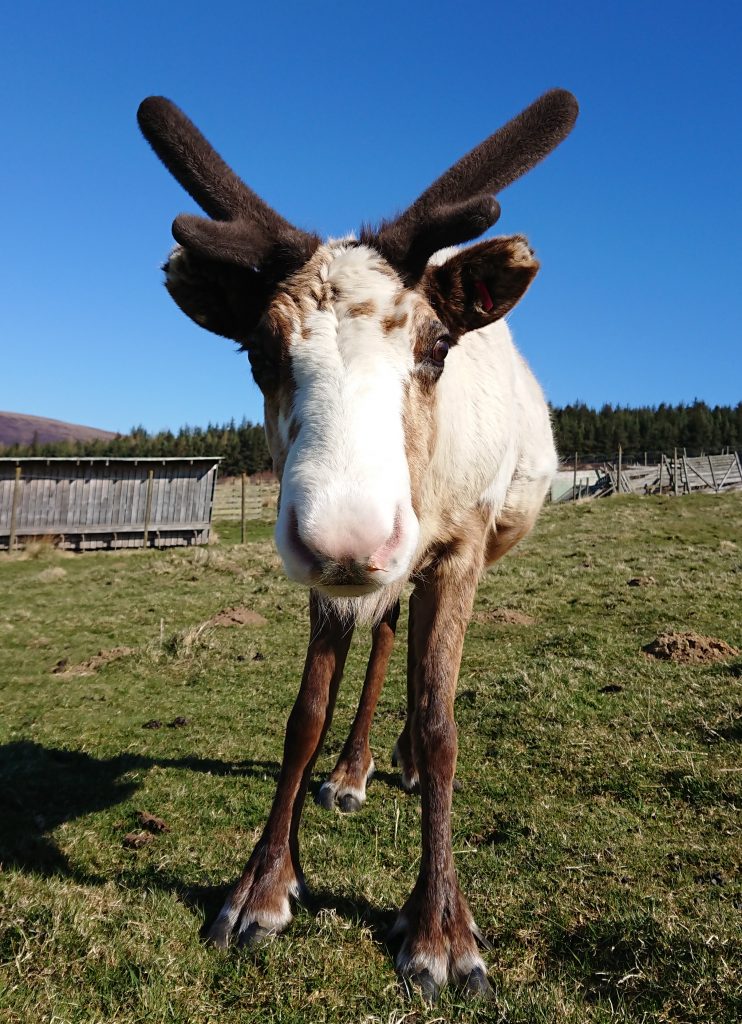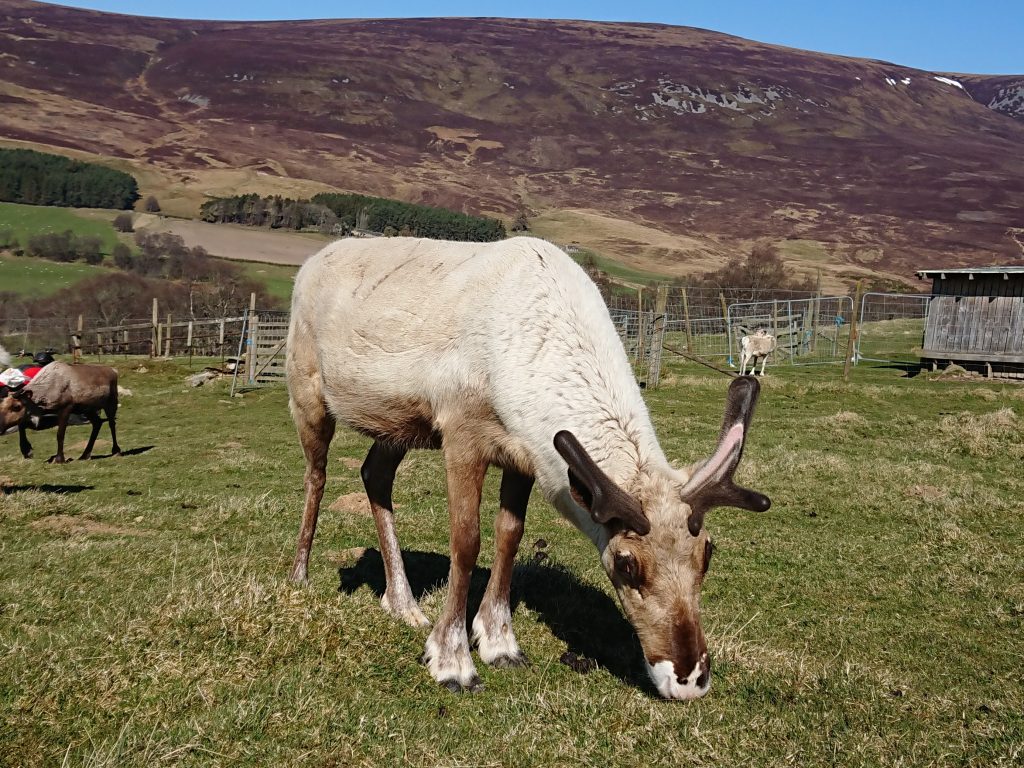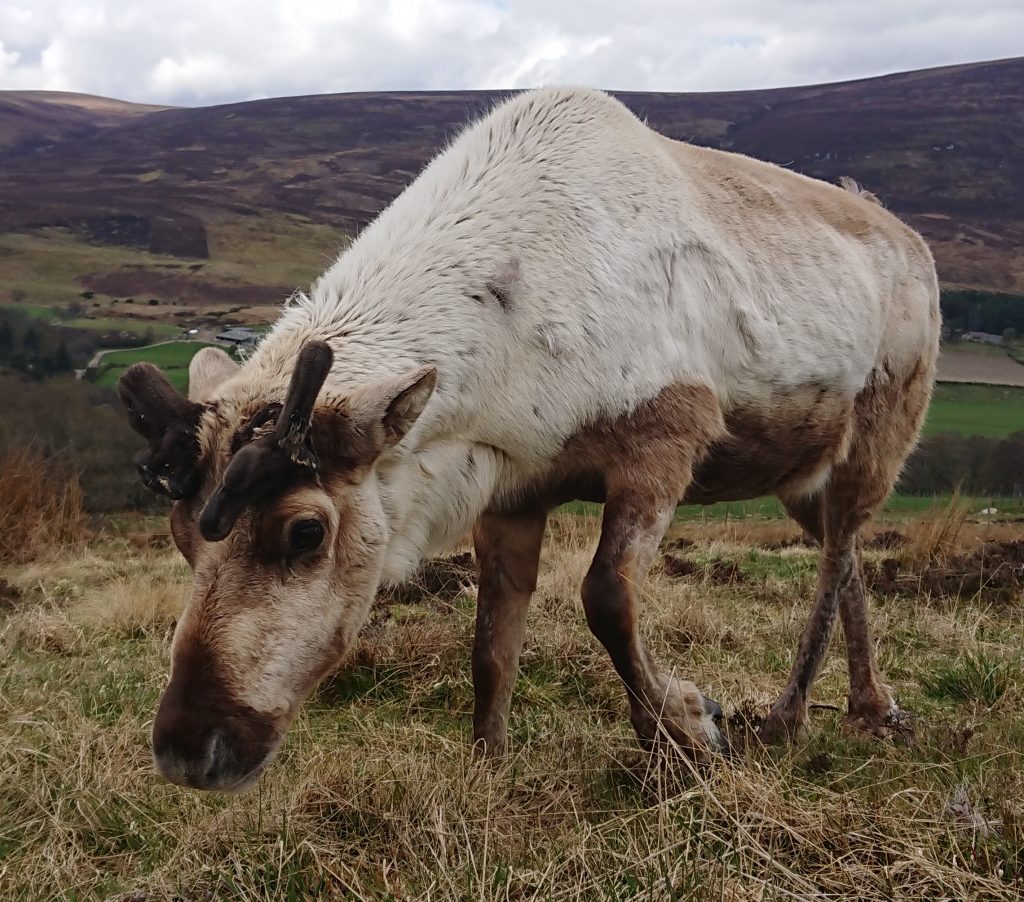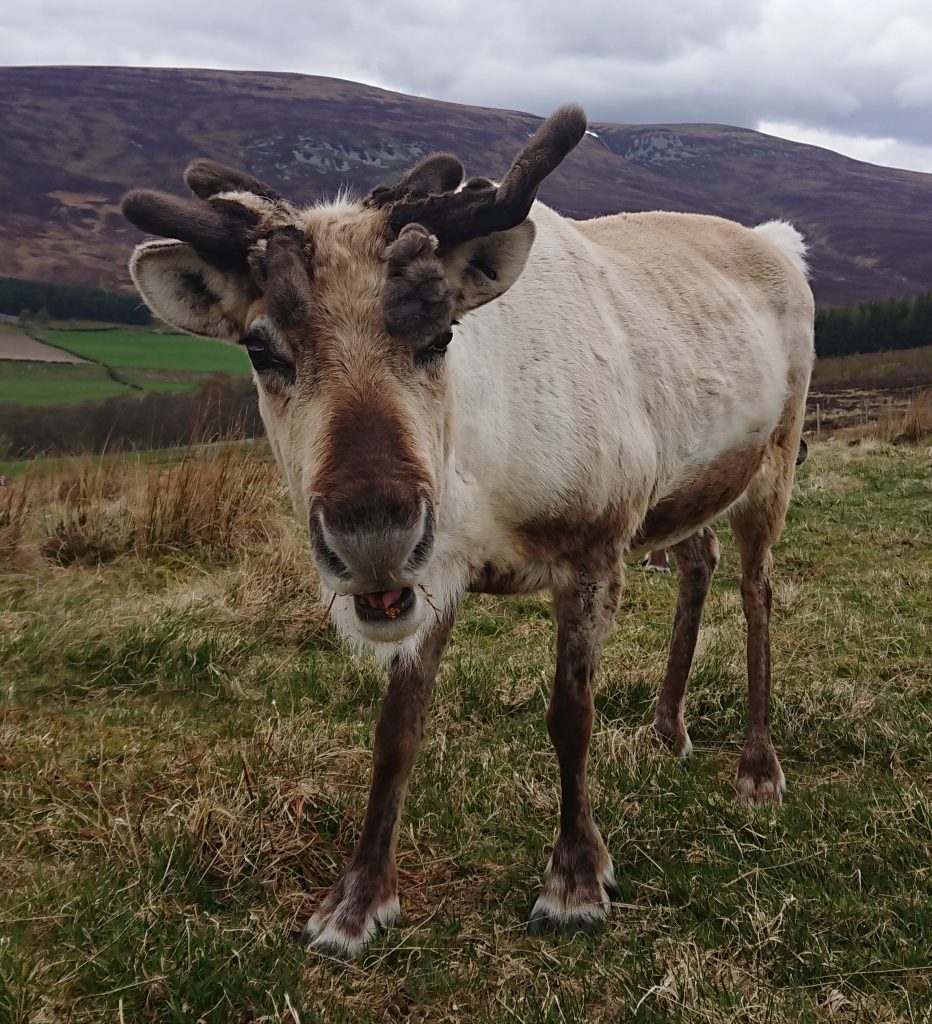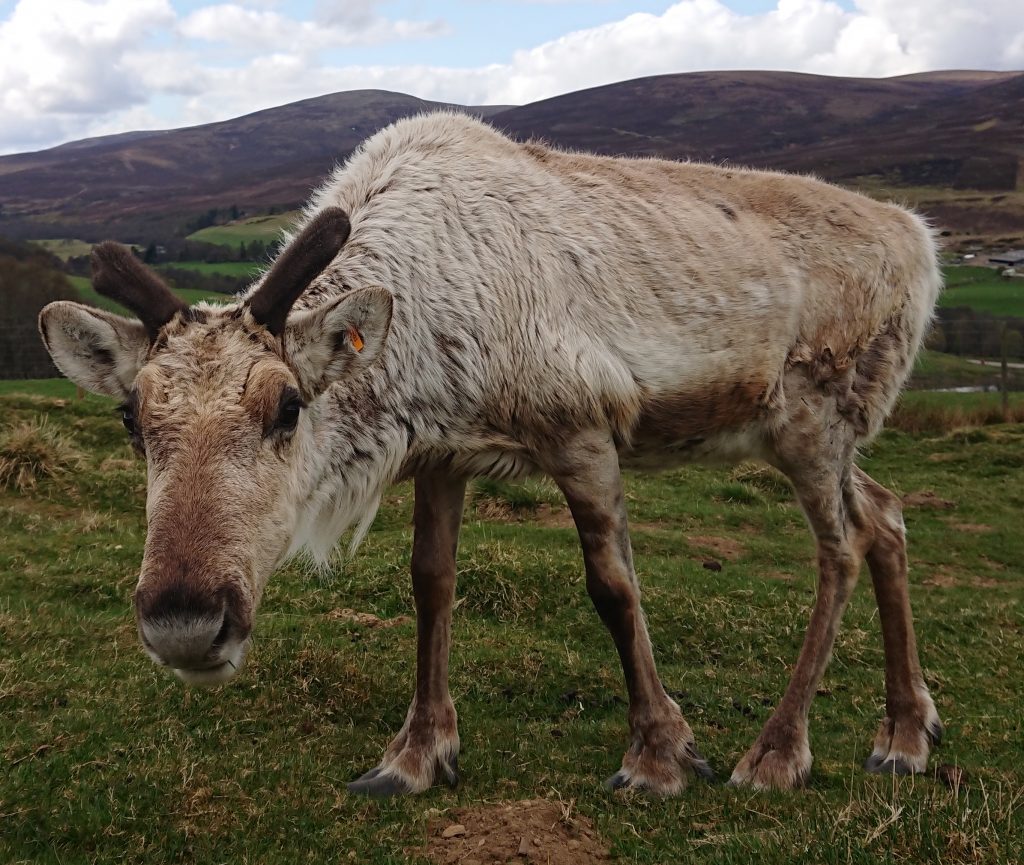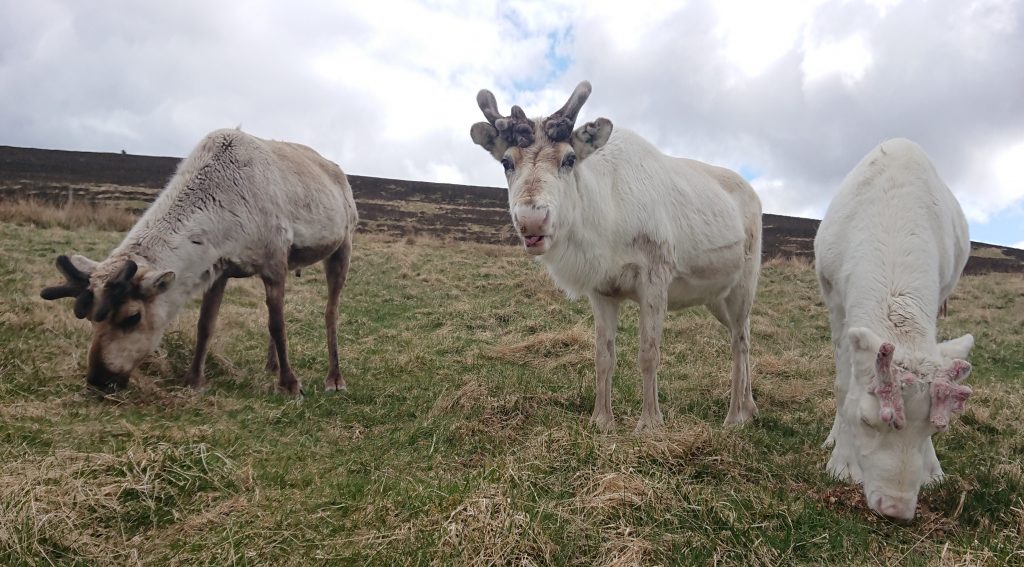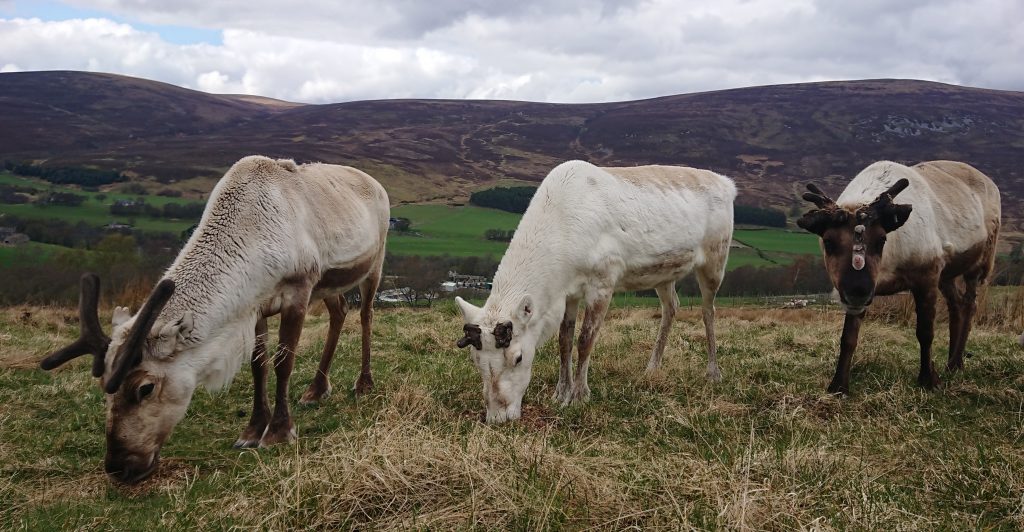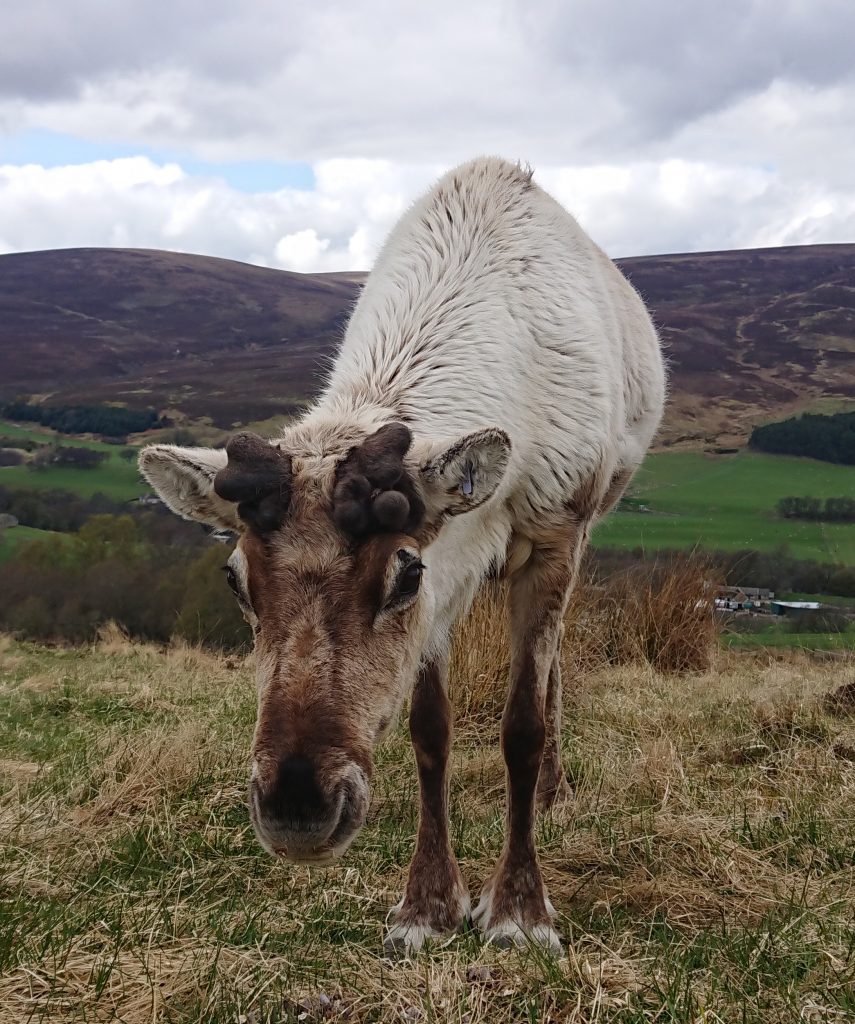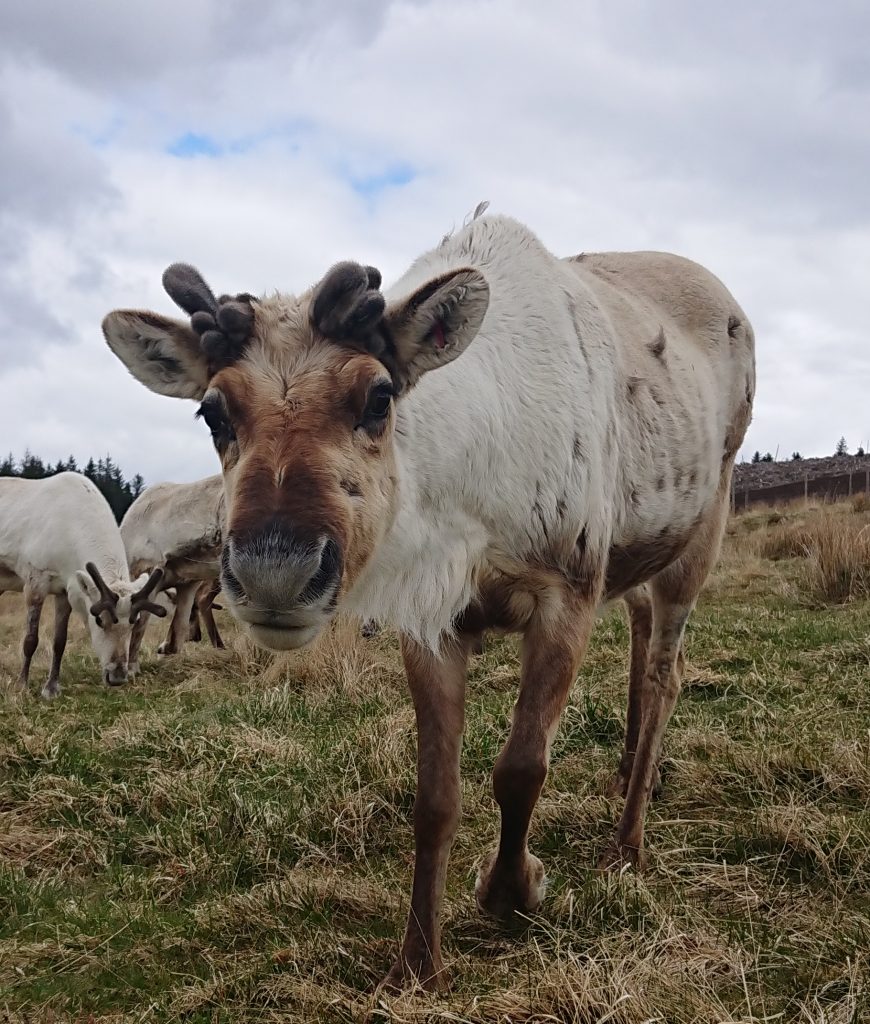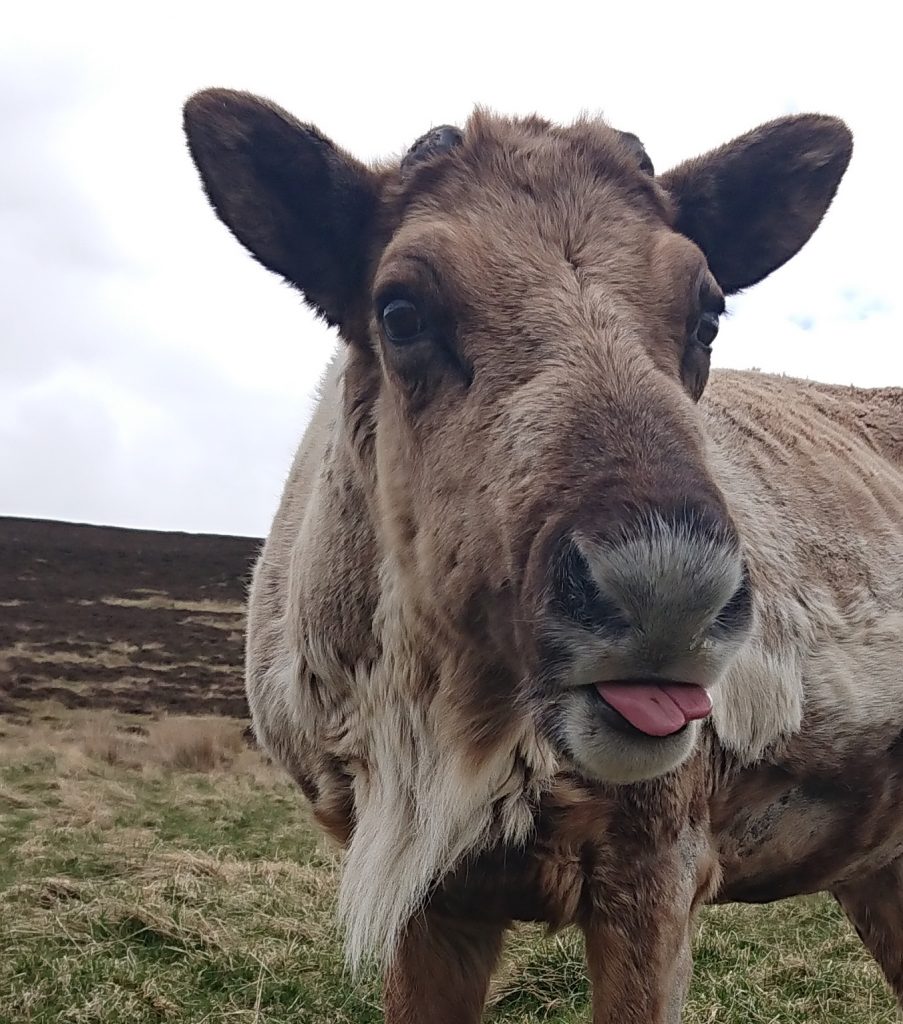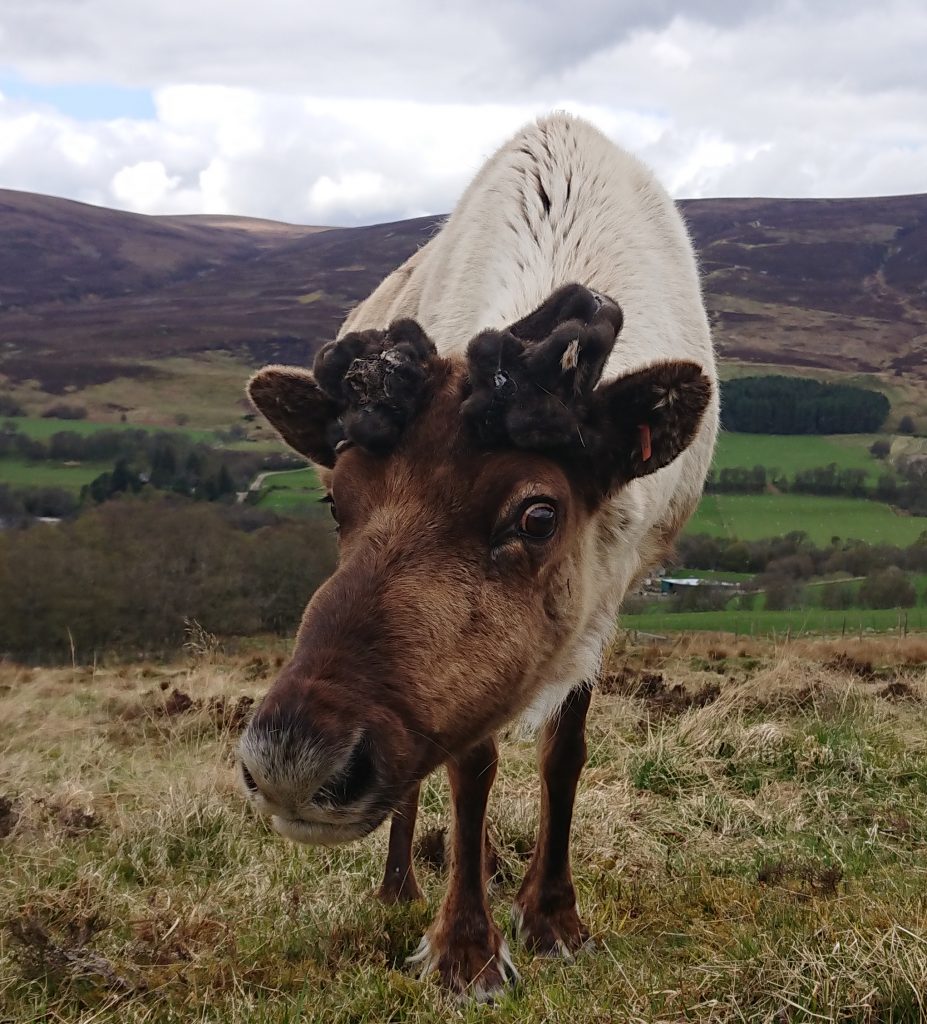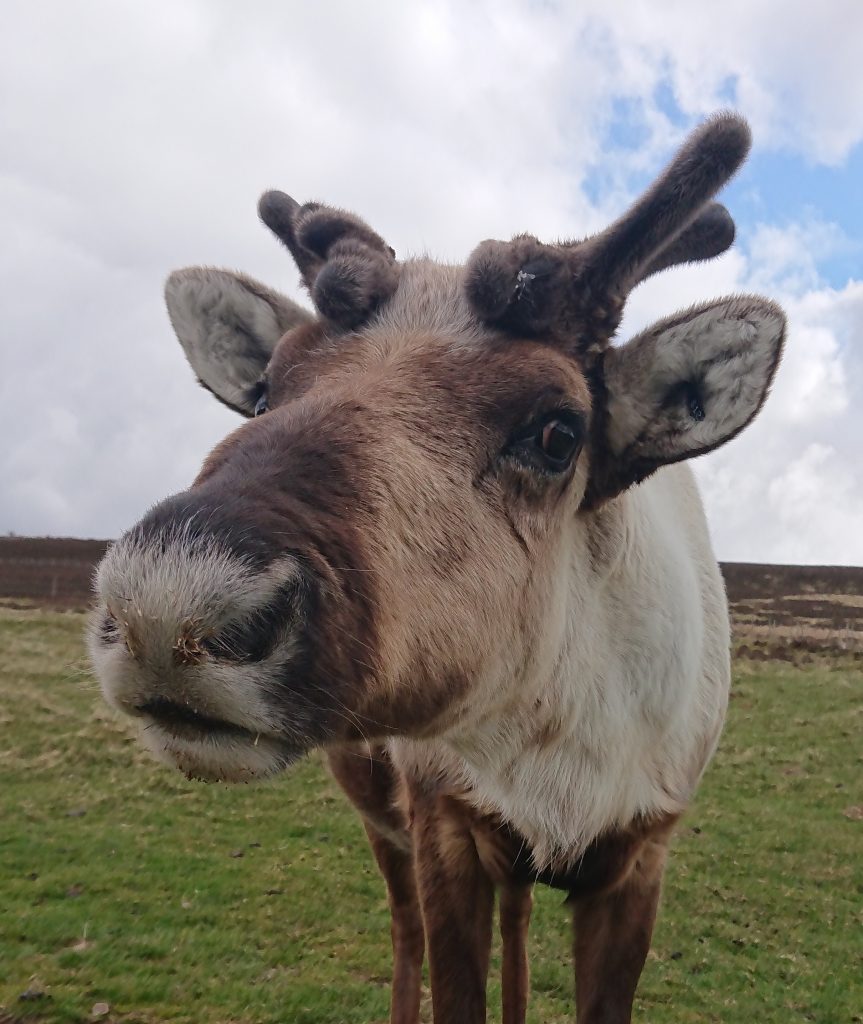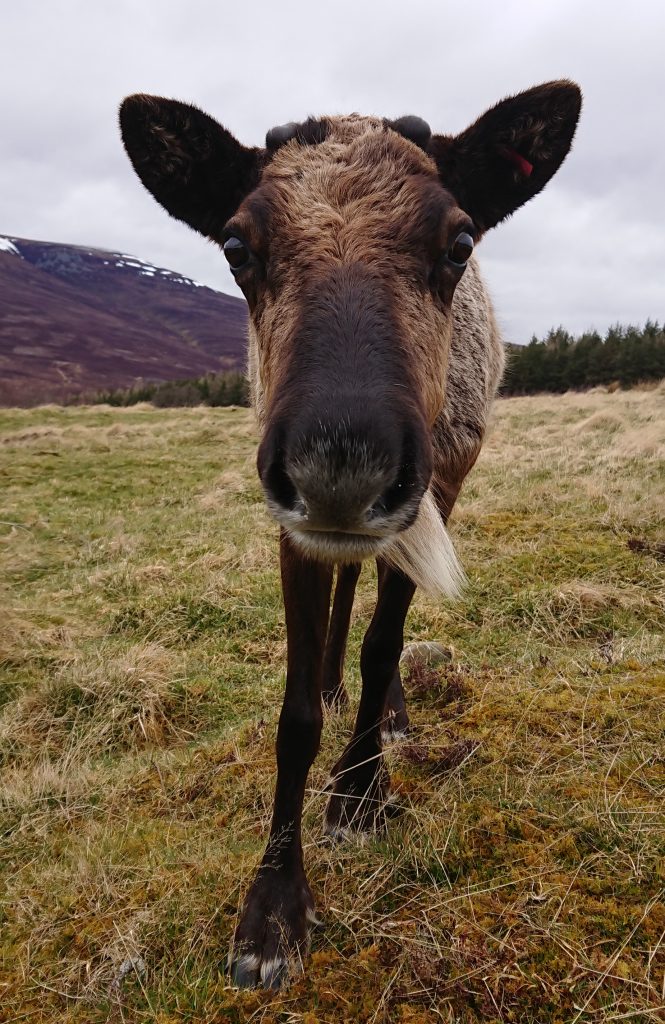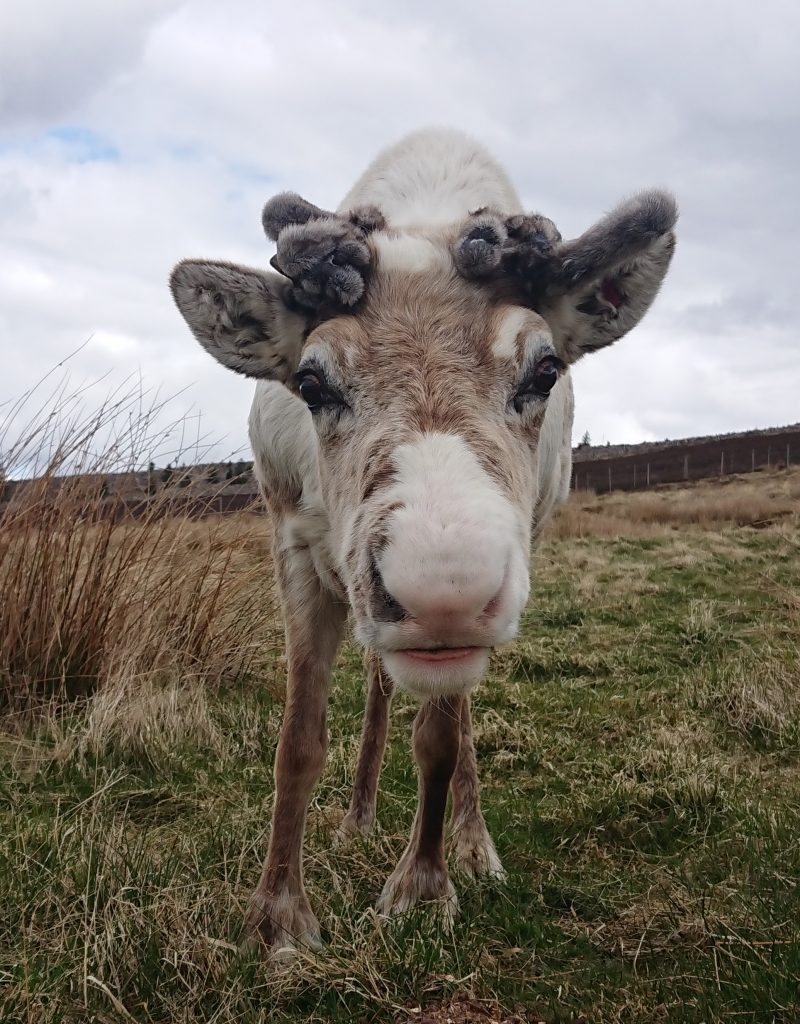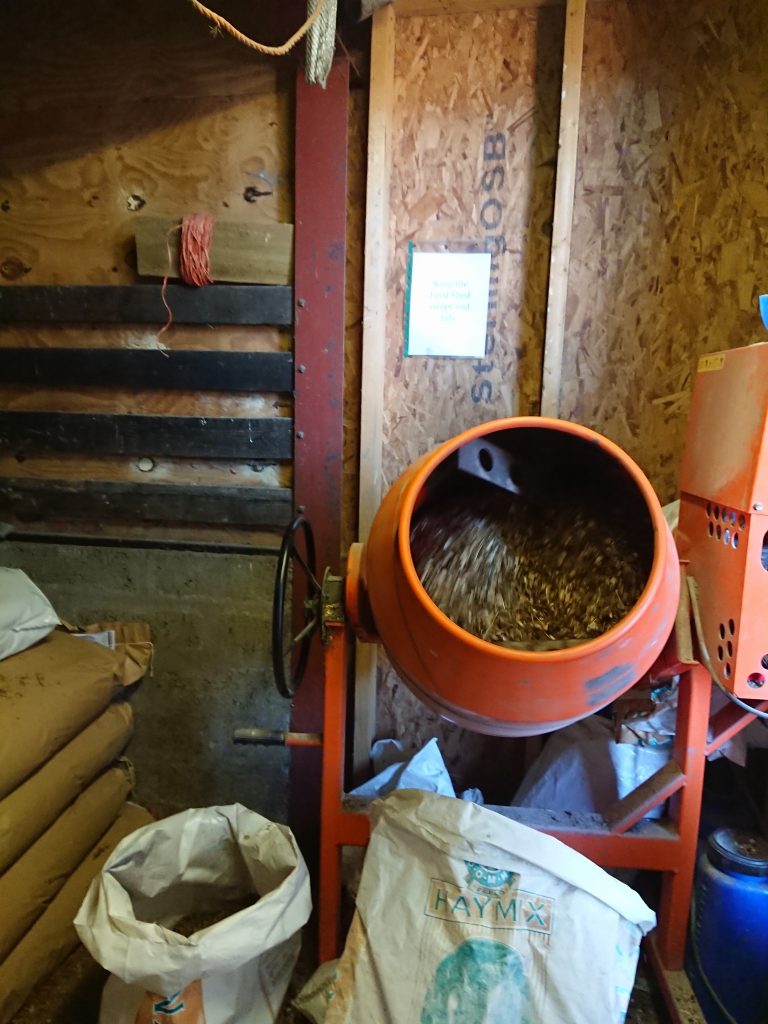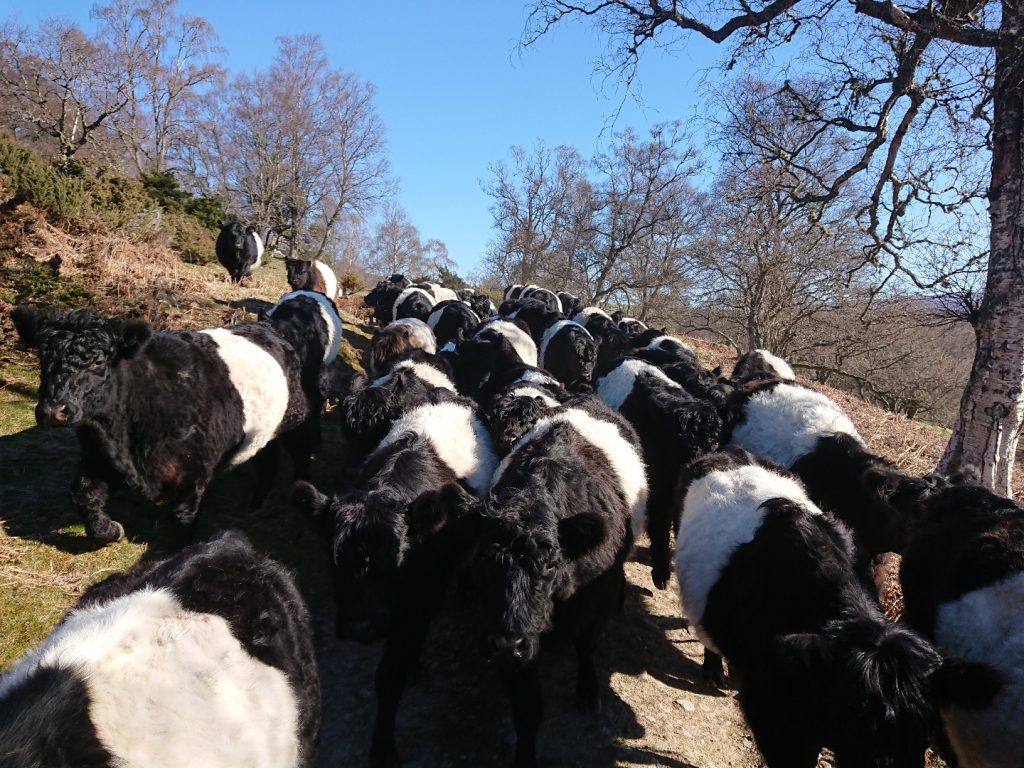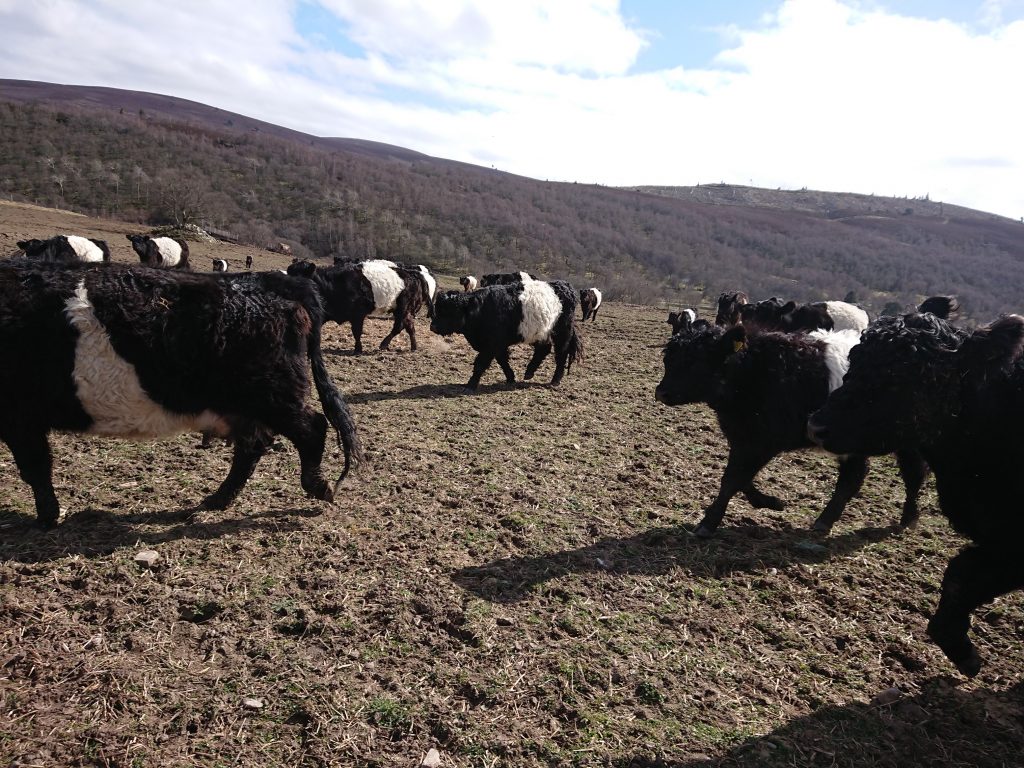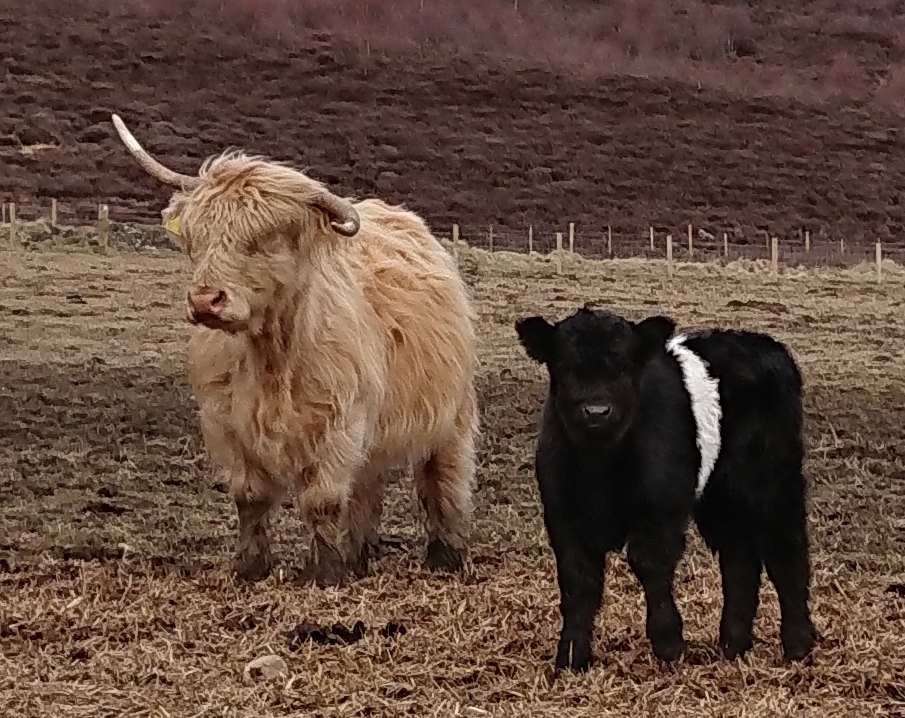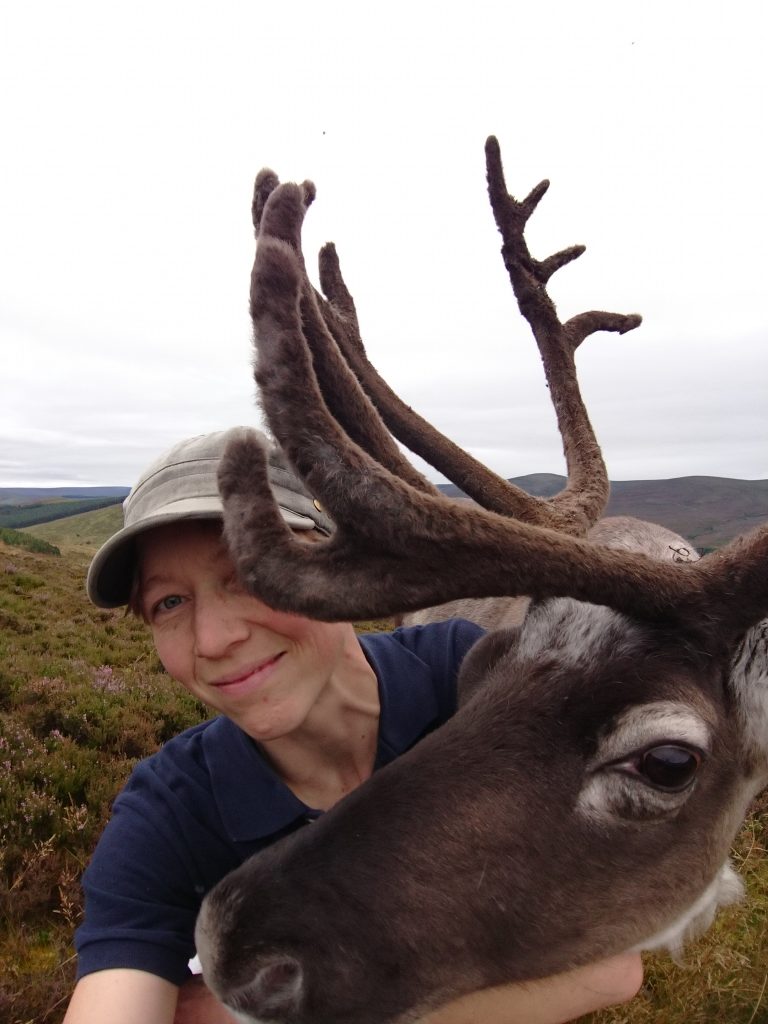Emm is one of our regular volunteers, and has sent us this lovely blog. Here’s part one, with another part to come later in the summer!
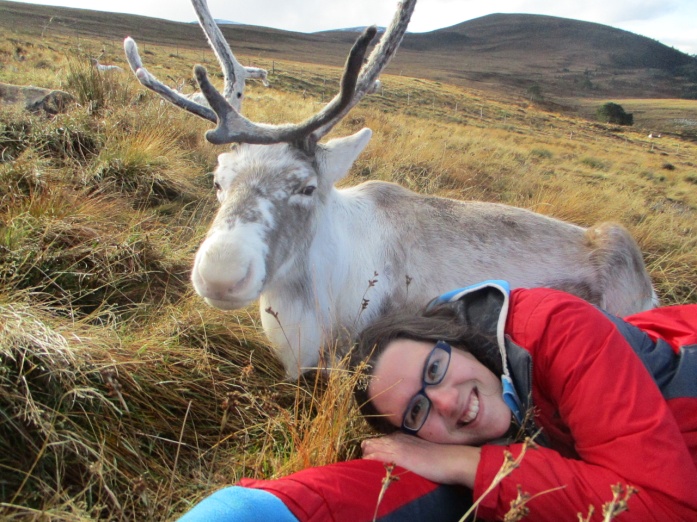
Over the years volunteering for the reindeer herd, I have experienced the different seasons. I decided to write a blog about it.
Winter
In the winter, I normally come up over New Year in the Christmas Holidays. The Reindeer Centre is very busy as people want to see reindeer after Christmas. The last time I was up over New Year which was this year 2020, we had at least 80 people queuing outside the door before we opened 10 o’clock. There is normally one Hill Trip a day. We had to do two trips a day because there were so many people and two trips-worth was selling out by about 10:30am.
In the hill enclosure the visitors are meeting both male and female reindeer. Most of the male reindeer in there are the ‘Christmas reindeer’ which have been to Christmas events and parades in the weeks leading up to Christmas. The reindeer are looking lovely in their winter coat and most of the reindeer have got antlers.
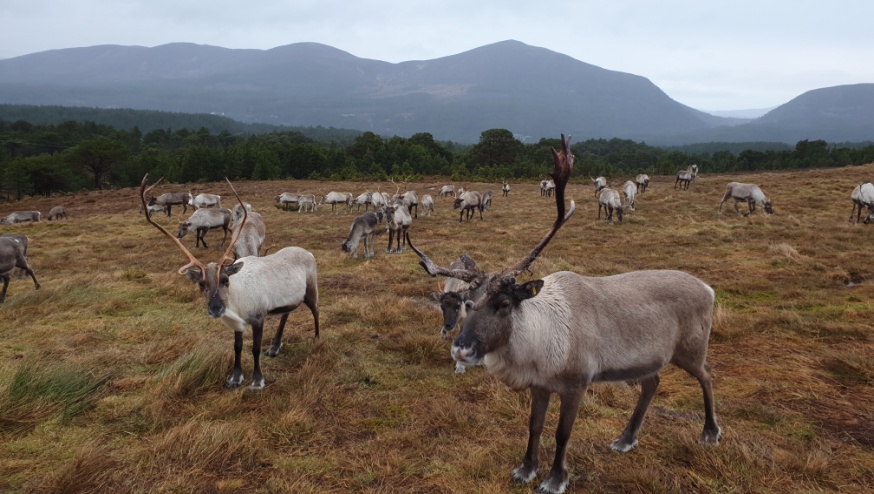
The weather is cold so my thermal hat, gloves and coat keeps me nice and warm. It is getting dark just before 5 o’clock so when we put the reindeer to bed and give them their tea, I normally put my head torch on.


The Reindeer Centre is closed on New Years Day, so I get a day off to explore the area with my mum and dad. This year on New Years Day we went on a long walk to explore An Lochan Uaine (The Green Loch) and the Ryvoan Bothy. It was really nice and everyone we passed wished us a Happy New Year. On the way back, we walked down hill on the path behind the Reindeer Centre and I saw beautiful views of Glenmore and Loch Morlich.

The Reindeer Centre is getting ready to close for a month and the reindeer are getting ready to go free ranging on the Cairngorm Mountains and the Cromdale Hills.
I help take the Christmas decorations down.
Spring
In the spring, I normally come up in April in the Easter Holidays or May or both.
April
Normally in April there is a Hill Trip once a day onto the free-range where some of the reindeer are free ranging on the Cairngorm Mountains. The hill enclosure is not normally in use. Every morning some of us go out to find the herd to give them their breakfast and to bring them down to a suitable place where we can do the Hill Trip as they are normally high up. It is a special feeling when you are leading the reindeer down to a suitable place for the trip. One time, I got to see the reindeer leap over a stream which I hadn’t seen before. They leapt over the stream well and they were very springy. That was spectacular to watch. It is magical and special seeing the herd on the free-range knowing they can go where ever they want with no fences stopping them. Reindeer can swim.
After one trip on the flats nelow the ski centre , the reindeer started to move towards the road heading for Windy Ridge which meant they were going to cross the road. Me and Dave parked by the road and he started calling them which they responded to. I stopped the traffic and was the “lollipop lady” in the middle of the road whilst the reindeer crossed and went onto Windy Ridge. Dave was leading them high up there. I went to find the stragglers who were coming up the hill in the ski car park and got them safely onto the ridge.
Most reindeer have lost their antlers and have started to grow new ones. Some reindeer have lost their antlers when I have been there. One year, I found Hopscotch’s antler in the Paddocks wood. The reindeer’s coats are very pale as the sun light over the winter has bleached them. The reindeer are hard to identify as most of them have no antlers and their unique markings have faded. The reindeer antlers are one of the key parts to identify a reindeer as each reindeer has their own unique antler shape. It is like their fingerprint.
Some of the female reindeer are heavily pregnant and their tummies look big. It is amazing to think there is a baby reindeer calf growing.
It is normally the time that the reindeer herders start to reseed the grass in the Paddocks. Sometimes I am in charge to move the sprinkler around the Paddocks. One April, Roman kept coming to the sprinkler and drinking from it or just stood by it like if he was cooling himself down. He even came to drink from the hose.
One April, I did the gardening in the Paddocks and Fergus (who was hand reared) kept following me around and kept kicking my bag thinking there was food inside.
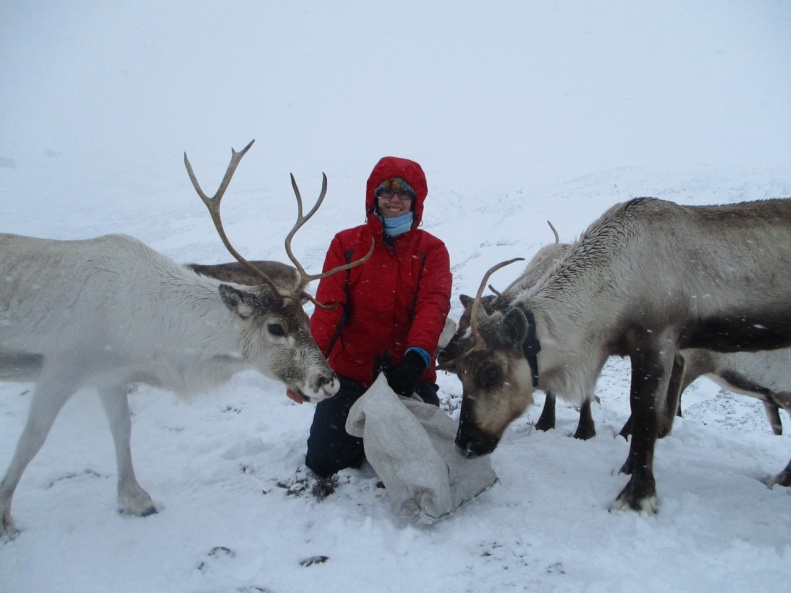
The only time I have seen the reindeer in snow was in April 2018. I have never seen so much snow in my life. The snow was so deep. It was magical and special seeing them in the snow in their natural environment. It was such an exciting time. It was like being in Narnia.
The snow is not a problem for reindeer. The reindeer are at their happiest in the snow. It is their natural environment and their bodies are made for the it.
It was so special seeing their natural behaviours. Seeing them walking in a line one behind the other to save energy. Seeing them dig in the snow with their big splayed hooves to find heather and mosses to eat. The reindeer seemed more excited to see us with the feed sacks as it is an easy meal for them as they will have to work hard digging in the snow to find food. Following their hoof prints in the snow was very exciting.
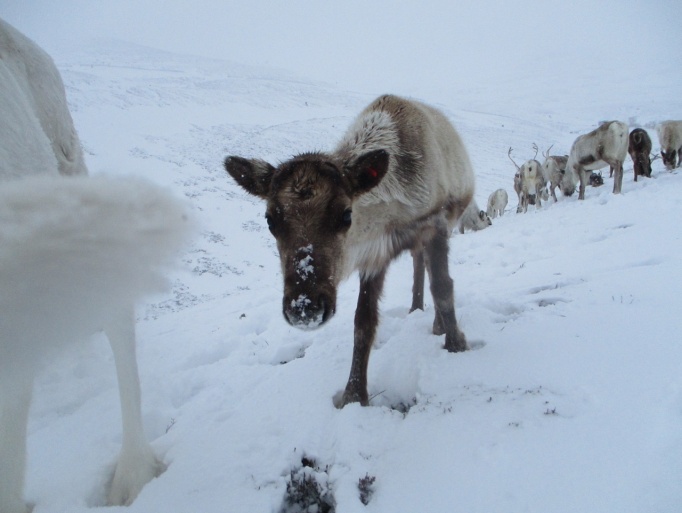
At the Reindeer Centre, we had to shovel the snow to makes paths as it was very deep and put out grit. Before the Hill Trip, we put down grit on some of the icy parts. We offered people walking poles to help with walking in the snow and it was so lovely seeing visitors helping one another. Walking down hill, we had to dig our heels into the ground to stop us from sliding down the hill.
The frozen tarns and puddles looked spectacular. It was my first time seeing skiers skiing in the mountains.
In May, it’s calving time. I get to see the reindeer being mums to their calves which is lovely and special to see. The calves are so cute and adorable. I get to see the reindeer being more vocal as the mums and the calves grunt to each other to communicate. It is a lovely and special time.
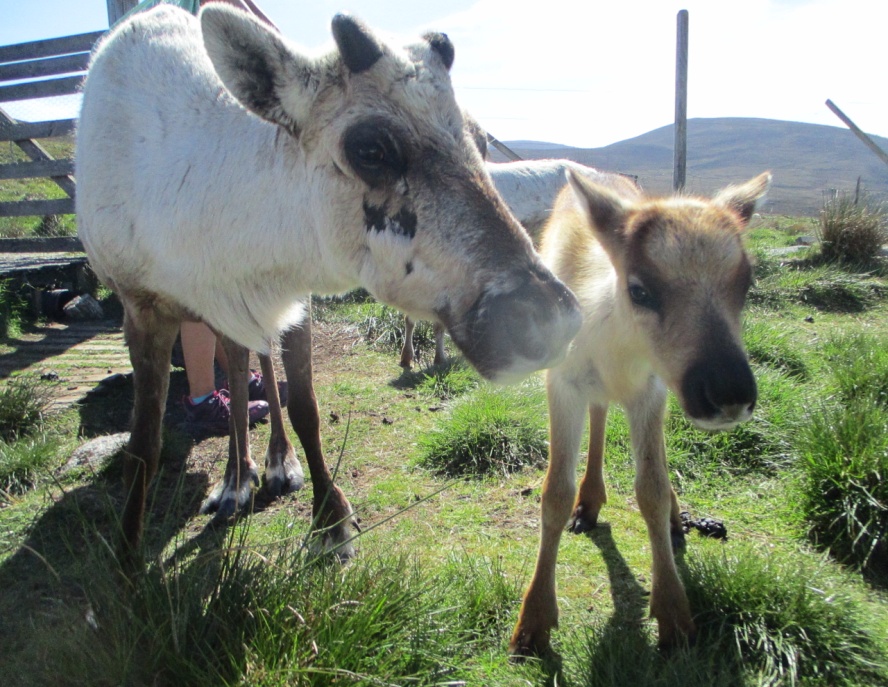
I was very lucky to be up when the twins called Starsky and Hutch were calves. The Reindeer Centre had a lot of interest as a reindeer having twins surviving is a rare thing. There was only one other case in the world of reindeer twins surviving birth which was in Finland. In Finland, they took the reindeer twins away from their mum to hand rear them. Starsky and Hutch stayed with their mum Lulu and Lulu gave them as much milk as she could. We topped up the milk by bottle feeding them. It was special bottle feeding them but they are unfortunately no longer with us.

The reindeer are continuing growing their antlers which are covered by velvet. The reindeer have scruffy coats as they are getting rid of their winter coat. Big clumps of fur come out of their winter coat.
There are two Hill Trips a day and they are in the hill enclosure.
Emm
There’ll be more from Emm in a future week, when she’ll tell us what she gets up to while volunteering in the summer and autumn seasons!

